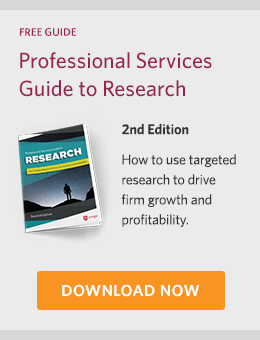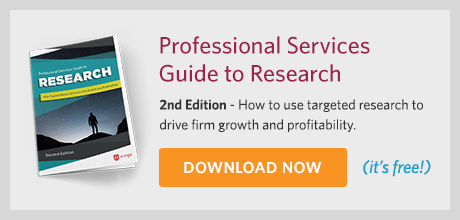6.4 Ethical Issues in Marketing Research
Learning outcomes.
By the end of this section, you will be able to:
- 1 Describe ethical issues relating to marketing research.
- 2 Discuss ways to avoid unethical research practices.

The Use of Deceptive Practices
In marketing research, there are many potential areas of ethical concern. Each day people share personal information on social media, through company databases, and on mobile devices. So how do companies make sure to remain ethical in decisions when it comes to this vast amount of research data? It is essential that marketers balance the benefits of having access to this data with the privacy of and concern for all people they can impact.
Too many times, we have heard about the lack of ethical decision-making when it comes to marketing research or personal data. Companies are hacked, share or sell personal information, or use promotion disguised as research. Each of these can be considered unethical.
Link to Learning
The insights association.
There is an organization devoted to the support and integrity of quality marketing research. This organization, called The Insights Association (IA) , “protects and creates demand for the evolving insights and analytics industry by promoting the indisputable role of insights in driving business impact.” 21 Having a solid understanding of ethical practices is critical for any marketing professional. Become familiar with terminology, responsibilities, enforcements, and sanctions of the IA’s code of standards and ethics .
First, let’s look at some deceptive practices that might be conducted through research. The first is representing something as research when it is really an attempt to sell a product. This is called sugging. Sugging happens when an individual identifies themselves as a researcher, collects some data, and then uses the data to suggest specific purchases. 22 According to the Insights Association Code of Marketing Research Standards, researchers should always separate selling of products from the research process. 23
Other deceptive research practices include using persuasive language to encourage a participant to select a particular answer, misrepresenting research data subjectively rather than objectively while presenting the results, and padding research data with fabricated answers in order to increase response rate or create a specific outcome.
Invasion of Privacy
Privacy is another concern when it comes to marketing research data. For researchers, privacy is maintaining the data of research participants discretely and holding confidentiality. Many participants are hesitant to give out identifying information for fear that the information will leak, be tied back to them personally, or be used to steal their identity. To help respondents overcome these concerns, researchers can identify the research as being either confidential or anonymous.
Confidential data is when respondents share their identifying information with the researcher, but the researcher does not share it beyond that point. In this situation, the research may need some identifier in order to match up previous information with the new content—for instance, a customer number or membership number. Anonymous data is when a respondent does not provide identifying information at all, so there is no chance of being identified. Researchers should always be careful with personal information, keeping it behind a firewall, behind a password-protected screen, or physically locked away.
Breaches of Confidentiality
One of the most important ethical considerations for marketing researchers is the concept of confidentiality of respondents’ information. In order to have a rich data set of information, very personal information may be gathered. When a researcher uses that information in an unethical manner, it is a breach of confidentiality . Many research studies start with a statement of how the respondent’s information will be used and how the researcher will maintain confidentiality. Companies may sell personal information, share contact information of the respondents, or tie specific answers to a respondent. These are all breaches of the confidentiality that researchers are held accountable for. 24
Although we hear about how companies are utilizing customers’ data unethically, many companies operate in an ethical manner. One example is the search engine DuckDuckGo . The search industry generates millions of pieces of user data daily; most of the providers of searches capitalize on this data by tracking and selling this information. Alternatively, DuckDuckGo has decided NOT to track its users. Instead, it has built its business model on the fact that no user information is stored—ever. Ethically, DuckDuckGo offers users private searches, tracker blocking, and site encryption. In an industry that is continuously collecting and selling personal search information, DuckDuckGo is the exception. There is no concern with being hacked because no data is collected. 25
Companies with a Conscience
The Gallup Organization is a market research firm that specializes in understanding market sentiment (see Figure 6.11 ). Every year among its numerous polls, Gallup completes an assessment of the honesty and ethical approach of different professions. In the 2021 survey, nursing was the top profession regarding these two measures. 26
Gallup’s research led additional findings about the state of ethics for businesses. “Ethical standards need to be at the core of an organization’s purpose, brand and culture.” 27 But what about Gallup’s own ethical standards? Gallup is “a global analytics and advice firm that helps leaders and organizations solve their most pressing problems.” 28 In order to be proficient and well-informed on the variety of topics Gallup investigates, it must hold itself and its employees to a high ethical standard.
Gallup completes multiple polls and research continuously. In order to meet the high standards of its public, Gallup must perform these practices in an ethical manner. Each step of the research process is completed with diligence and intention. For those reasons, Gallup is recognized for its ethically backed data. Gallup is a global leader in market insights and has locations in seven cities within the United States and an additional 27 locations internationally. According to Chuck Hagel, former Secretary of Defense of the United States, “Gallup is truly an island of independence—it possesses a credibility and trust that hardly any institution has. A reputation for impartial, fair, honest and superb work.” 29
As an Amazon Associate we earn from qualifying purchases.
This book may not be used in the training of large language models or otherwise be ingested into large language models or generative AI offerings without OpenStax's permission.
Want to cite, share, or modify this book? This book uses the Creative Commons Attribution License and you must attribute OpenStax.
Access for free at https://openstax.org/books/principles-marketing/pages/1-unit-introduction
- Authors: Dr. Maria Gomez Albrecht, Dr. Mark Green, Linda Hoffman
- Publisher/website: OpenStax
- Book title: Principles of Marketing
- Publication date: Jan 25, 2023
- Location: Houston, Texas
- Book URL: https://openstax.org/books/principles-marketing/pages/1-unit-introduction
- Section URL: https://openstax.org/books/principles-marketing/pages/6-4-ethical-issues-in-marketing-research
© Jan 9, 2024 OpenStax. Textbook content produced by OpenStax is licensed under a Creative Commons Attribution License . The OpenStax name, OpenStax logo, OpenStax book covers, OpenStax CNX name, and OpenStax CNX logo are not subject to the Creative Commons license and may not be reproduced without the prior and express written consent of Rice University.

- school Campus Bookshelves
- menu_book Bookshelves
- perm_media Learning Objects
- login Login
- how_to_reg Request Instructor Account
- hub Instructor Commons
- Download Page (PDF)
- Download Full Book (PDF)
- Periodic Table
- Physics Constants
- Scientific Calculator
- Reference & Cite
- Tools expand_more
- Readability
selected template will load here
This action is not available.

6.4: Ethical Issues in Marketing Research
- Last updated
- Save as PDF
- Page ID 99246

Learning Objectives
By the end of this section, you will be able to:
- Describe ethical issues relating to marketing research.
- Discuss ways to avoid unethical research practices.
The Use of Deceptive Practices
In marketing research, there are many potential areas of ethical concern. Each day people share personal information on social media, through company databases, and on mobile devices. So how do companies make sure to remain ethical in decisions when it comes to this vast amount of research data? It is essential that marketers balance the benefits of having access to this data with the privacy of and concern for all people they can impact.
Too many times, we have heard about the lack of ethical decision-making when it comes to marketing research or personal data. Companies are hacked, share or sell personal information, or use promotion disguised as research. Each of these can be considered unethical.
Link to Learning: The Insights Association
There is an organization devoted to the support and integrity of quality marketing research. This organization, called The Insights Association (IA) , “protects and creates demand for the evolving insights and analytics industry by promoting the indisputable role of insights in driving business impact.” 21 Having a solid understanding of ethical practices is critical for any marketing professional. Become familiar with terminology, responsibilities, enforcements, and sanctions of the IA’s code of standards and ethics .
First, let’s look at some deceptive practices that might be conducted through research. The first is representing something as research when it is really an attempt to sell a product. This is called sugging. Sugging happens when an individual identifies themselves as a researcher, collects some data, and then uses the data to suggest specific purchases. 22 According to the Insights Association Code of Marketing Research Standards, researchers should always separate selling of products from the research process. 23
Other deceptive research practices include using persuasive language to encourage a participant to select a particular answer, misrepresenting research data subjectively rather than objectively while presenting the results, and padding research data with fabricated answers in order to increase response rate or create a specific outcome.
Invasion of Privacy
Privacy is another concern when it comes to marketing research data. For researchers, privacy is maintaining the data of research participants discretely and holding confidentiality. Many participants are hesitant to give out identifying information for fear that the information will leak, be tied back to them personally, or be used to steal their identity. To help respondents overcome these concerns, researchers can identify the research as being either confidential or anonymous.
Confidential data is when respondents share their identifying information with the researcher, but the researcher does not share it beyond that point. In this situation, the research may need some identifier in order to match up previous information with the new content—for instance, a customer number or membership number. Anonymous data is when a respondent does not provide identifying information at all, so there is no chance of being identified. Researchers should always be careful with personal information, keeping it behind a firewall, behind a password-protected screen, or physically locked away.
Breaches of Confidentiality
One of the most important ethical considerations for marketing researchers is the concept of confidentiality of respondents’ information. In order to have a rich data set of information, very personal information may be gathered. When a researcher uses that information in an unethical manner, it is a breach of confidentiality . Many research studies start with a statement of how the respondent’s information will be used and how the researcher will maintain confidentiality. Companies may sell personal information, share contact information of the respondents, or tie specific answers to a respondent. These are all breaches of the confidentiality that researchers are held accountable for. 24
Although we hear about how companies are utilizing customers’ data unethically, many companies operate in an ethical manner. One example is the search engine DuckDuckGo . The search industry generates millions of pieces of user data daily; most of the providers of searches capitalize on this data by tracking and selling this information. Alternatively, DuckDuckGo has decided NOT to track its users. Instead, it has built its business model on the fact that no user information is stored—ever. Ethically, DuckDuckGo offers users private searches, tracker blocking, and site encryption. In an industry that is continuously collecting and selling personal search information, DuckDuckGo is the exception. There is no concern with being hacked because no data is collected. 25
Companies with a Conscience: Gallup
The Gallup Organization is a market research firm that specializes in understanding market sentiment (see Figure 6.11). Every year among its numerous polls, Gallup completes an assessment of the honesty and ethical approach of different professions. In the 2021 survey, nursing was the top profession regarding these two measures. 26
Gallup’s research led additional findings about the state of ethics for businesses. “Ethical standards need to be at the core of an organization’s purpose, brand and culture.” 27 But what about Gallup’s own ethical standards? Gallup is “a global analytics and advice firm that helps leaders and organizations solve their most pressing problems.” 28 In order to be proficient and well-informed on the variety of topics Gallup investigates, it must hold itself and its employees to a high ethical standard.
Gallup completes multiple polls and research continuously. In order to meet the high standards of its public, Gallup must perform these practices in an ethical manner. Each step of the research process is completed with diligence and intention. For those reasons, Gallup is recognized for its ethically backed data. Gallup is a global leader in market insights and has locations in seven cities within the United States and an additional 27 locations internationally. According to Chuck Hagel, former Secretary of Defense of the United States, “Gallup is truly an island of independence—it possesses a credibility and trust that hardly any institution has. A reputation for impartial, fair, honest and superb work.” 29
Skip to main content
- Ethical and Legal Issues in Market Research
You are here
- Market Research
Advance in Your Company and the Industry
Market research is an evolving profession responsible for meeting a growing list of demands. Chief among them is heightened concerns about privacy and data protection.
The University of Georgia’s Ethical and Legal Issues in Market Research course will help you navigate the labyrinth of legal requirements by introducing you to a set of ethical principles that will position you to meet the vast majority of legal requirements. It also describes the concrete steps you should take to protect the data you collect and thereby ensure the privacy of those who participate in research.
As a graduate of the course you will be well positioned to understand your ethical responsibilities to the people whose data you collect or process, and the importance of understating the legal and regulatory requirements of countries where you acquire and process such data. This ability will help you succeed in your career and advance in an industry that is constantly changing.

No market research firm exists in a vacuum. Recognize your role in the advancement of this demanding industry.
Market research is an evolving profession in a larger society with norms, shared cultural aspects, standards, best practices, and a mix of players with differing roles and missions. The research profession's long-term success depends on recognizing that behavioral constraints represent an informal code of conduct governing our relationships across all these components. Our Ethical and Legal Issues in Market Research course helps you navigate the labyrinth of legal requirements by introducing a set of ethical principles that position you to protect collected data and safeguard the privacy of those participating in research.
Research the right way, and your career will thank you.
What You'll Learn
Learning objectives, who should attend, course information.
Just as no firm exists in a vacuum, market research is a part of a larger society with norms, shared cultural aspects, standards, best practices, and a mix of players with differing roles and missions. The long-term success of the research profession depends on our recognizing that there are behavioral constraints which represent an informal code of conduct governing our relationships across all of these components.
In this course, you will learn about:
- Ethical practices in research and the steps you need to take to avoid causing harm to participants.
- Personal data and how to how to protect the individual who provided it, whether the data is collected by direct questioning or by passive methods.
- Privacy by Design—a toolkit for helping organizations and individuals test their market research processes and project designs, to make sure that any risks to participating individuals’ privacy and of causing harm are kept to a minimum.
- The international principles that apply to protecting personal data. You will master how these principles are converted into law and built into everyday research practice through self-regulation, based on industry codes and guidelines.
- The ISO standards (i.e., the International Standards Organization) that have been developed to help ensure consistent research processes and minimum quality standards when working globally.
As a course graduate, you will be well-positioned to understand your ethical responsibilities to the people whose data you collect and the importance of understating the legal and regulatory requirements of countries where you acquire and process such data. This ability will help you succeed in your career and advance in a constantly changing industry.
Learn ethical research practices and identify the steps necessary to avoid causing harm to participants. Identify methods that protect personal data and how to protect the individual who provided it, whether the data is collected by direct questioning or by passive methods. Use Privacy by Design—a toolkit for helping organizations and individuals test their market research processes and project designs to minimize risks to participating individuals’ privacy. Apply international principles to protect personal data and master how these principles are converted into law and built into everyday research practice through self-regulation based on industry codes and guidelines. Understand the ISO standards (International Standards Organization) development to ensure consistent research processes and minimum quality standards when working globally.
After completing this course you should be able to:
- Explain why solid ethical practices are essential to the long-term success of market research and the responsibilities researchers have to the key stakeholders—research participants, clients, the general public, and the research profession.
- Describe the concept of harm and how it applies to those whose data we collect and/or process.
- Describe the concept of personal data - sometimes called personally-identifiable data or PII - and its evolution over time.
- Describe some of the ways which a transition from primary data collection to increased reliance on secondary data is changing our ethical responsibilities to those whose data we analyze.
- Discuss the universal principles of privacy and data protection as applied in market research in different countries and cultures.
- Distinguish between ethical requirements and legal requirements.
- Describe what a privacy impact assessment or PIA involves.
- List the major industry and professional associations for market research practitioners and organizations worldwide.
- Explain how the market research industry’s commitment to self-regulation creates a unique set of legal and ethical obligations.
- Cite major sources of guidance for researchers concerned about their legal and ethical responsibilities.
Successful enrollees earn a Digital Badge and 0.8 University of Georgia Continuing Education Units (CEUs).
- Anyone engaged in the design and execution of a research study.
- IT professionals in research organizations who have responsibility for their company’s IT infrastructure.
- Anyone looking for a general understanding of the ethical practices in market research and the steps you need to take to do no harm.
- Client-side staff who commission research.
- Experienced researchers looking to catch up with the latest developments.
- Mid-level staff seeking to broaden their understanding of their ethical responsibilities.
- Corporations seeking professional development options for their internal training portfolio.
- Supplier-side researchers seeking courses for new-employee onboarding.
- Enroll at any time
- Complete the course's required graded components within 30 days
- For more details on How Does “Ethical and Legal Issues” Course Work , please click on the downloadable file.
- For Frequently Asked Questions , please click on the downloadable file.
$359 - Standard Fee
$329 - Association Discount (Members* of: Insights Association; ESOMAR; Canadian Research Insights Council, The Research Society, Intellus Worldwide, QRCA, AMAI, MRII Board of Directors, UGA MMR Advisory Board.)
$50 - One-Month Extension (only one extension is granted per participant)
*Membership will be verified.
Prepayment is required to be registered. The prices listed are per person (US Funds). Prices are subject to change.
Adam Phillips – Managing Director, Real Research

Continuing Education Information
Students successfully completing graded components earn a Digital Badge and 0.8 University of Georgia Continuing Education Unit (CEU) from The University of Georgia.
As a graduate of the course you will be recognized by industry associations, employers, peer groups and other professionals as understanding how to translate your research findings into reports and presentations that grab your audience’s attention, address the business decision your client needs to make, and offer sound and useful recommendations. This recognition will help you advance in your company and the industry.
There are no prerequisites for enrolling in Ethical and Legal Issues in Market Research . However, prospective enrollees might also consider our course, Introduction to Market Research and the Research Process . See Principles Express courses for more details.
Preferred Browser: To take advantage of the different features (PDF files, URLs/links to external websites, animated exercises, audio and video clips) you should use a Windows or Macintosh-based browser . A robust browser such as Chrome , Firefox , Microsoft Edge , or Safari and a fast internet connection provide the best experience. The online platform supports many popular web browser versions. To find out if your computer's current software configuration is compatible, see System & Software Requirements .
Preferred Browser: For optimal use of our platform's features, including PDF files, URLs to external websites, animated exercises, and audio and video clips, we recommend using a laptop or desktop computer. To ensure the best experience, we suggest using web browsers such as Chrome , Firefox , Microsoft Edge , or Safari , along with a fast internet connection. You can check our System & Software Requirements to confirm if your computer's current software configuration is compatible.
There is no additional textbook reading assignment for this course; all readings are contained within the online course and in the links and resources you will find in the online course.
Details are subject to change.
All readings are contained within the online course.
Select the organization to visit their websites.
Founding Organizations

Proud Corporate Sponsors of MRII

Supporting Organizations

Ethical and Legal Issues in Market Research
- January 2, 2024
Learn the fundamental ethical and legal principles that govern our relationships with the people whose data we collect and/or process in research, and why it is important that those principles govern our actions at all times.
Recent Posts
New mrii study reveals positive attitudes toward ai in the work lives of market researcher professionals, wapor latam becomes official partner of mrii as newest supporting association , why writing skills matter in an ai world, exploring the future of healthcare insights in greenbook, mrii launches new emerging markets award, subscribe to our newsletter.
An official website of the United States government
The .gov means it’s official. Federal government websites often end in .gov or .mil. Before sharing sensitive information, make sure you’re on a federal government site.
The site is secure. The https:// ensures that you are connecting to the official website and that any information you provide is encrypted and transmitted securely.
- Publications
- Account settings
Preview improvements coming to the PMC website in October 2024. Learn More or Try it out now .
- Advanced Search
- Journal List
- Springer Nature - PMC COVID-19 Collection

A qualitative analysis of the marketing analytics literature: where would ethical issues and legality rank?
Imran bashir dar.
1 Department of Technology Management, Faculty of Management Sciences, International Islamic University, Islamabad, Pakistan
Muhammad Bashir Khan
Abdul zahid khan, bahaudin g. mujtaba.
2 Management and Human Resources, Huizenga College of Business and Entrepreneurship, Nova Southeastern University, 3301 College Avenue, Fort Lauderdale, FL 33314-7796 USA
In response to the concerns of global data-driven disruption in marketing, this qualitative study explores the issues and challenges, which could unlock the potential of marketing analytics. This might pave the way, not only for academia–practitioner gap mitigation but also for a better human-centric understanding of utilising the technologically disruptive marketing trends, rather making them a foe. The plethora of marketing issues and challenges were distilled into 45 segments, and a detailed tabulation of the significant ones has been depicted for analysis and discussion. Furthermore, the conceptually thick five literary containers were developed, by coupling the constructs as per similarity in their categorical nature and connections. The ‘ethical issues and legality’ was identified as on the top, which provided literary comprehension and managerial implication for marketing analytics conceptualisation in the fourth industrial revolution era.
Introduction
The three dominant approaches (institutional, functional, commodity) used in past decades for dealing with overall marketing science concepts seem to be losing their viability with speed (Shepherd 1955 ), parallel to the availability of digital business avenues and diversity in sources of data (Hauser 2007 ; Dasan 2013 ; Wedel and Kannan 2016 ). Therefore, the analytics approach, with a problem-solving thinking frame, though had been discussed in the 1950s, is being observably adapted, and outcomes in terms of causation are continuously being gauged. Thoughtfully, academia has been left behind in this case, where now curriculum innovation (Wilson et al. 2018 ) and a shift of practices to gain academic coherence is being reportedly welcomed (Davenport and Harris 2017 ).
As per the field of Marketing, the mapping and quantification of causality are becoming the core of Marketing science, which is mastered by Marketing Analytics with a focus on action ability and informed decisions that have strategic value while not overlooking hard-data evidence (Grigsby 2015 , pp. 15–16; Rackley 2015 , pp. 1–30). Informed decisions, for the survival of any organisation, must get into action to create readiness for change (reaction) as per the evolution in the outer environment. The same is true for the biologically continued existence of organisms and for simple things as driving a car without a dashboard (Rackley 2015 , pp. 1–6). Even during the coronavirus pandemic situation, the thorniest question for board rooms today is the usage of disruptive technologies to sustain marketing efforts that could bear fruit (Balis 2020 ; Shah and Shah 2020 ; Waldron and Wetherbe 2020 ).
In terms of defining the concept of marketing analytics, there are many notable research endeavours, from the start of the new millennium, each having its analytical grounds (Davenport and Harris 2017 ). The researchers confined themselves to the sense that could glue the understanding blocks of academia and practitioners. So, marketing analytics has been sensed as exposing oneself to the descriptive, diagnostic, predictive, and prescriptive stages for insightful data reservoirs, for functional intimacy of marketing science in the contemporary world to sustain the competition and get better results through smarter decisions (Davenport and Harris 2017 ; Davenport et al. 2010 ; Davenport 2006 ; Farris et al. 2010 ).
Talking about issues and challenges, marketing analytics is research heaven for academia but a trap for the practitioners, as it has emerged from the process of convergence and divergence of multifaceted business areas (Mahidhar and Davenport 2018 ; Davenport and Kim 2013 ; Davenport and Harris 2007 ). Moreover, it is a continuous struggle to know about the customers before they know about themselves, and it could be done by marketing analytics (Davenport and Harris 2017 ; Farris et al. 2010 ). This can pave the way for a culture that would be conducive for marketing analytics in the corporate world. Marketing analytics is shifting from being merely a buzzword to full-fledge research area that is termed to be multidimensionally nascent, which is apparent by various systematic literature reviews on the subject concerned in connection to data-rich environments (Wedel and Kannan 2016 ), web analytics and key performance indicators (Saura et al. 2017 ), social media metrics (Misirlis and Vlachopoulou 2018 ), defining the field and convergence status (Krishen and Petrescu 2018 ), data mining (Dam et al. 2019 ), links to other fields and methods (France and Ghose 2019 ), research and practice environments (Iacobucci et al. 2019 ), and prescriptive analytics (Lepenioti et al. 2020 ).
Presently, senior marketing professionals are worried about their ability to measure these factors (Mahidhar and Davenport 2018 ). The data reservoirs are available, but the aligned mechanism for converting the data into actionable insights is observed to be a big missing link (Farris et al. 2010 ), which could result in analytically strategical misfit from consumer and marketing perspective (Zhang et al. 2010 ). Therefore, marketing analytics could be a threat to almost all the business models for pre-data backed economy, held globally. This may be termed as sustainable disruption, which means a continuous rigorous change (Davenport and Kim 2013 , pp 105–110). Moreover, it is evident that the improvement in technology has been phenomenal in the past century; still, the remarks of Peter Drucker are relevant in terms of computer and man, so the study of the issues and challenges would be necessary to mitigate any risks of failure (Guercini 2020 ). Therefore, despite the plethora of books and articles on the problem area concerned, a lack of research is apparent in terms of exhaustively studying the marketing analytics issues and challenges.
Procedural genesis for systematic literature review (SLR)
As pointed out by connection between decades of research that the view about systematic literature review (SLR) has been evolving and enriching itself (Webster and Watson 2002 ). Therefore, confining to a step-by-step approach and sticking to a set pattern defined by past research, which have been cited by the majority of the researches, were followed by the researchers for a line of action that could result in a significant research outcome (Levy and Ellis 2006 ; Okoli and Schabram 2010 ). The steps were grouped into three levels as input planning, process execution, and outcome reporting, by following the steps as reflected in Fig. 1 .

PRISMA statement
PRISMA, “Preferred Reporting Items for Systematic reviews and Meta-Analyses”, is one of the most endorsed ways for diagrammatically reporting the quality and rigour of systematic literature reviews. Therefore, the researchers applied the guidelines by Moher et al. ( 2009 ), with 62,621 citations, known as the “PRISMA Statement”.
Apart from reporting the systematic review, AMSTAR “measurement tool for assessment of systematic reviews” was studied (Shea et al. 2009 ), cited 1506 times, to enhance the quality of this study in terms of methodological validity and reliability. Additionally, the structure of “PICOS”, “participants, interventions, comparators, outcomes, and study design” was followed to clarify the scope of this study in terms of the multiple interventions and criteria (Smith et al. 2011 ; Van den Bosch and Sang 2017 ). Therefore, the quality assessment and enhancement of reporting, methodological aspects, and scope were exhausted through applying PRISMA, learning from the AMSTAR tool and following PICOS. The researchers did their best in not compromising on any level and dimension for developing a valuable and comprehensive systematic literature review study.
SLR process step by step
The PRISMA statement has four dimensions: (i) Identification, (ii) Screening, (iii) Eligibility, and (iv) Included, as reflected in Fig. 1 . These dimensions are further bifurcated into five steps. First, research questions were developed based on the current basic understanding of the problem from the call for papers and impactful recent research reservoir available from various databases and high-quality journals. The backward search in terms of the references, authors, and keywords was done to see through the results for any missing piece of research work, based on which the present work has been carried out (Webster and Watson 2002 ). Additionally, the forward search was done to review the further contribution of authors and its relevance to the problem. Moreover, the forward reference search was exercised to check the selected being cited by other researchers. This exercise of backward and forward search equipped the researchers with a basic picture of the theoretical contributions in terms of the problem at hand (Fig. 2 ).

Explored marketing analytics issues and challenges (MAICs)
The second step to identify the related studies by applying multiple metrics (Harzing 2007 ) . Third, the search metrics were accompanied by time frame and other restrictions, along with key search terms for exploring the digitally available research reservoirs. The fourth step has been inclusion and exclusion process application on the filtered body of quality research work. At this stage, the spearhead inspection of the literary reservoir is executed in terms of problem and research questions relevancy. The fifth step is to synthesise the finalised stream of research work, having a significant contribution in the problem area.
Research questions
This research study is aimed to address the proceeding research questions:
What sort of issues and challenges related to marketing analytics implementation were identified by the past research?
What are the most critical/highly ranked issues and challenges of marketing analytics (2000 to 2020)?
Criterion based exhaustive literature exploration
The level of exhaustiveness is measured by observation of search outcomes through “Publish or Perish 7” (PoP7) software sourced from Harzing ( 2007 ), accompanied with backward and forward searches, through different keywords relating to various dimensions of the research questions being considered. Once the output gets repeatedly and notably similar to previous search exercises, then the reliable maturity level could be achieved. For this purpose, a wide variety of carefully selected keywords, based on topic/area, marketing analytics, in this case, are used in a variety of combination through applying Boolean operators like OR/NOT/AND to enhance the “search reach” and enrich “search depth” (Webster and Watson 2002 ; Hedges and Cooper 2009 ; Baker 2016 ). The relevancy of the keywords was adapted by first searching for the highly cited articles discussing “marketing analytics” and fetching keywords for issues and challenges from them. Afterwards, those keywords, such as “marketing analytics” AND “barrier” OR “challenge”, “strategy”, “issue”, “failure”, “success”, “implementation”, “performance”, “measurement”, “understanding”, “problem”, “application”, “operation”, “process”, “execution”, “acceptance”, “critical success factors”, “marketing analytics implementation challenges”, and “marketing analytics implementation issues and challenges”. Total papers (deleting all duplications, excluding other material) extracted were 854 from which only 73 highly cited articles were selected. Notably, even after searching through coupling the issues and challenges keywords with “marketing analytics”, the filters of the rigorous study were plugged in to go beyond search metrics.
Databases and digitalised reservoirs
For furthering the research process, decision making for the selection of databases has been projected by backward and forward search, which presented the journals and publishers having the most relevant and impactful number of articles. Therefore, the question of “where” and “how” has been addressed for the readiness of review (Levy and Ellis 2006 ). The databases below are the filtered reservoirs, as per citations and relevancy of the articles related to the issues and challenges, and availability at the university library or beyond it:
- Harvard Business Press
- Taylor & Francis
- Wiley Online Library
- Journals of American Marketing Association (AMA)
- INFORMS PubsOnline
- Ingenta Connect
Filtration and extraction of research articles
The amalgamation of the research articles through strict numerous restrictions has been ground into final filtration by exploring the content in them in terms of the problem area, marketing analytics issues, and challenges, as per the past research available. The articles that notably and chiefly discussed the issues and challenges were extracted after review, and the remaining studies were abandoned (Levy and Ellis 2006 ; Hedges and Cooper 2009 ). The numbers of the selected papers for review were narrowed by exerting the following metrics:
- (i) As reflected in the step three of PRISMA statement, the papers having relevant and quality research (peer-reviewed, impact factor journals and high citations) were selected
- (ii) The research papers or conference papers that are not peer reviewed, duplicates, and nonrelevant papers were discarded
- (iii) Articles written in English language, published within the time frame of 2000–2020, discussing the issues and challenges of marketing analytics in a reasonable manner were included (Levy and Ellis 2006 ; Okoli and Schabram 2010 ).
The researcher for point (i) first checked the relevancy of the research paper or conference paper and whether they are peer reviewed or not. This does not mean that the researchers filtered the relevant research papers or conference papers that were peer reviewed and were not impact factor or highly cited. Actually, the fifth stage of “PRISMA Statement” steered the researchers to finalise and extract the articles having significant contribution, which resulted in terms of impact factor journal articles mostly that were eventually highly cited as well. It can be tracked from the results reflected in “Table 6 —ScientoMetrics-Quartile Analytics” that 92% of the finalised papers are categorised within Q1 to Q3, whereas 80% are from Q1.
ScientoMetrics-quartile analytics
This extensive exercise paved the way for finalised selection of 59 papers (only a handful) from 73 highly cited, based on the original result of 997 that were selected, as detailed in Tables Tables1 1 and and2 2 (Table (Table3 3 ).
Sum of holistic search by research databases
The bold values signify the numeric result in terms of frequency for the research papers observed as per the captioned criteria
Research articles filtered/finalised by research databases
Theoretical mapping of marketing analytics (2000–2020)
Synthesise and evaluation
The papers discussing marketing analytics issue and challenges identified in Table Table2 2 pave the way for detailed synthesis as per research question 1. Table Table4 4 projects the issues and challenges of marketing analytics for the previous two decades. The papers have been organised in terms of their publication year and details about the specific qualitative and quantitative method that is provided as well.
Marketing analytics issues and challenges (2000–2020)
The exhaustive search for the marketing issues and challenges from the relevant, impactful, and having significant contribution reflected, along with the overall literature synthesis, reflected the list of 45 marketing analytics issues and challenges, captioned as Marketing Analytics Issues and Challenges (MAICs 1–45), in Table Table5. 5 . From these MAICs, the non-significant ones have been dropped, which can be traced from the numbering of the issues and challenges accordingly, in Table Table4. 4 . The citations and journal information about the finalised 59 research papers are tabulated in Appendix. Moreover, Table Table6 6 (ScientoMetrics-Quartile Analytics) shows the impact of the journals in which the papers have been published, ranging from Q1 to Q3.
List of the marketing analytics issues & challenges (MAICs)
Analysis and discussion
The exhaustive study of the finalised articles in terms of the issues and challenges reflected that the ethical issues and legality dimension are at the top in terms of frequency-based ranking. The ethical issues and legality involve the legal implementation of consumer rights protection in terms of privacy and usage of customer personal data. Moreover, the impact of organisational operations on consumers has to be made transparent enough so that user consent would be sought. Other issues and concerns related to implementation are concerned with the marketing analytics ecosystem.
By following the mapping and classification style of previous studies (Adams et al. 2016 ; Bembom and Schwens 2018 ; Bocconcelli et al. 2018 ; Ceipek et al. 2019 ; Klang et al. 2014 ; Nguyen et al. 2018 ; Popay et al. 2006 ; Tranfield et al. 2003 ; Zahoor et al. 2020 ), the theoretical categorisation depicts that the five literary grounds titled as RBT/RBV, Upper Echelons Theory, Organisational Learning theory, Dynamic Capability Theory/DCV, and Institutional Theory are the most influential ones in terms of constructs projected and notable research studies. This projects that the marketing analytics can be better explained by utilisation of the theoretical paradigm provided by the above, which could pave the way for further deeper studies.
Apart from the above-tabulated theories, many other theories have been employed, which include Complexity Theory (Xu et al. 2016 ; Vargo and Lusch 2017 ), Knowledge-Based View (Côrte-Real et al. 2017 ), SERVQUAL Model (Lemon and Verhoef 2016 ), Relationship Marketing Theory (Lemon and Verhoef 2016 ), Motivation-Hygiene Theory (Rutter et al. 2016 ), Supply Chain Management Theory (Schoenherr and Speier‐Pero 2015 ), Marketing Performance Measurement Theory (Järvinen and Karjaluoto 2015 ), Marketing Capability Theory (Mu 2015 ), Knowledge Management Theory (Holsapple et al. 2014 ), and Reciprocal Action Theory as well as Social Identity Theory (Chan et al. 2014 ).
Table Table6 6 depicts that 92% of the total articles (54 articles) are part of Q1–Q3 journals, where 47 studies are from Q1 journals, which means that 80% of the detail in Table Table4 4 is composed of the best available past studies based on the latest scientometrics.
For RQ2, the researchers classified the issues and challenges into the five themes depicting the core learning from this study that would pave the way for further studies:
Customer-centric strategic structures & customer engagement
The element of co-creation is apparent where organisations have to behave proactively to know what the customers want before they do, and to make them partners in seeking a competitive advantage. Consumer-based structures are being observed as the way forward for structural capitalisation that could support the information value chain (Mikalef et al. 2018 ; Sheng et al. 2017 ).
Integrated marketing communication (IMC) channels are the gateway for developing an ecosystem of customer relationship management so that targeted consumer engagement could be done for mental programming for description, diagnosis, prediction, and personalised prescription of customer lifetime experience management (Lemon and Verhoef 2016 ; Mikalef et al. 2018 ). Furthermore, for the sake of quant, the process of metrics alignment for not falling into the vicious trap of GIGO (garbage in, garbage out) marketing performance measures could be done when academia joins hands with practitioners and the foggy gap between two is cleared (Sheng et al. 2017 ). Furthermore, customer engagement in this age of personalisation is to go beyond purchase and build a platform through value exchange from and to marketer versus consumer, while assessing the psychological state of the customer in terms of participating in different initiatives of the marketer (Lemon and Verhoef 2016 ). Therefore, paving the way forward for the co-production of values through engagement platforms that are a mix of brick-n-mortar. This cycle of knowledge creation needs a mechanism of data insight extraction for actionable decision making (Xu et al. 2016 ).
For this purpose, the pre-analytics age conventional marketing strategies may not be that relevant for online brand communities, social networking sites, and consumer-based business structuring, where beyond text communication tools could be used and customers could be rewarded on their category of user (Chan et al. 2014 ). For the same reason, the concept of sharing economy and alignment of co-creation metrics to it have been considered as the key to unlocking future research and field opportunities (Kannan 2017 ).
Marketing analytics sticky culture & management practices
The system propelled culture accompanied by resource-based view (RBV) has been depicted to possess the operational grip for conversion into organisational capability. The management practices revolving around RBV categorise each factor into the classification of resources that involve data reservoirs, infrastructural foundation, and information systems installations. Process-oriented benchmarking is rehearsed, and metrics are prioritised accordingly (Mikalef et al. 2018 ). The marketing analytics sticky culture is sourced from the data-driven organisational culture where people, irrespective of their authority and hierarchical managerial positions, do indulge in decision-making practices that are backed by the informational projections extracted from data. Moreover, the data-driven management practices do mitigate silos decisions and propagate interdependency of actions (Wang and Hajli 2017 ).
In this jigsaw of data-driven marketing analytics, sticky analytics culture, and management practices, the issue of ethical consideration for usage of customer data and mix of customer consent versus reward is a nascent one that calls for further research (Martin and Murphy 2017 ).
Shifting the paradigm from RBV to knowledge-based view (KBV), Côrte-Real et al. ( 2017 ) are of the view that data analytics reservoirs are a network of knowledge-steered value chains that are not restricted to organisational boundaries and customer–marketer exchange mediums. These external value chains of knowledge that could promise operational agility and widening the business canvas are the next big thing to explore for competitive sustainability.
The ecosystem of marketing analytics is a whirl of RBV and KBV paradigms of industrialisation 4.0 where each function of marketing has its own set of analytical measurements for performance management. Therefore, further spearhead mapping of marketing-mix investment portfolios in high-tech or IT conducive environments is imperative (Lemon and Verhoef 2016 ; Wedel and Kannan 2016 ; Sheng et al. 2017 ).
As a crux, the aggressive proactive management practices for crafting system-oriented analytics sticky culture are necessary, which could integrate relevant management practices with overall business objectives (Mikalef et al. 2018 ; Chen et al. 2012 ). This would make insightful data utilisation that a management strategic priority would reflect the organisational agility phase. Moreover, an inclusively developed reservoir of management learning behaviours to re-adjust, re-align, and re-do practices could develop an indigenous culture. This could help the organisation to have capabilities that are hard to copy (Kannan 2017 ; Sheng et al. 2017 ).
Geo-location-based sense, data mining, and content management
The geo-location-based sense through social media management while taking care of the ethical issues and legality issues is vital to utilise the value from social mediums. Data-backed sense of social issues is a plus in this arena. The market strategies are to be ground in marketing core objectives, where knowledge sharing and change readiness are top of the line for the fifth revolution, marked by personalisation. The IT resource management for this shift is a major barrier that creates big data issues. This connects to the dearth of need analysis in terms of skill requirement and training/curriculum correspondents to analytics techniques and technological issues that disturb the customer experience management agenda (Wang and Hajli 2017 ; Bradlow et al. 2017 ; Martin and Murphy 2017 ; Sheng et al. 2017 ).
Surprisingly, Mobile analytics, as being the portable platform, has raised the bar for platform-free content management, where user-generated content is much valued for better acceptability. The disruption is caused in terms of customer privacy and security issues, where the race for EWOM & ROI has eroded societal sense. Therefore, counter disruptive technologies are imperative for governance, to develop dynamic capabilities for future marketing analytics (Mikalef et al. 2018 ; Sheng et al. 2017 ; Wedel and Kannan 2016 ; Chen et al. 2012 ).
Insightful data utilisation & performance measures
The need analysis of the business competition in terms of dynamic market capabilities and disruptive technological change sets the stage for alignment of the data management and valuation strategies (Mikalef et al. 2018 ). These strategies reflect the operations for data utilisation for the actionable insights as per the impact metrics defined for the communication channels where consumers exercise their consumer power. The digital orientation of marketing mix is exercised for mapping of the gaps in talent requirement, organisational agility, actionable metrics, and sharing the profits from marketing analytics with customers (Leeflang et al. 2014 ; Bradlow et al. 2017 ).
For this purpose, rigorous extraction and utilisation of data insights have been done through a deeper study of marketing data analytics for tracking the business process transformations that may indicate the untapped value reservoirs of “blue ocean” customer profits (Wang and Hajli 2017 ). Martin and Murphy ( 2017 ) stressed forwarding of profitability share to the customer through reward mechanism in this situation for a long-term relationship and value creation in marketing analytics age (Sheng et al. 2017 ). Wedel and Kannan ( 2016 ) presented the novel research methods for marketing analytics and depicted the connection between privacy and data security, marketing mix, and personalisation. Moreover, the future buying patterns of customers and exploration of developing service instruments in accordance calls for the usage of smart data snatching tools that could seamlessly apply metrics for customer tracking (Bradlow et al. 2017 ). The performance measures attached to this exercise may involve the issues of customer privacy and data security that needs to be vigilantly handled. The area of customer data security and privacy embedded with legal issues is a nascent marketing analytics arena that calls for further empirical research.
Besides, the marketing analytics heterogeneity enrichment is being in limelight through work on content marketing, web analytics, automation of marketing processes, and development of marketing analytics curriculum based on empiricism, as per pressing demand for unfathomable insight of related performance measures (Järvinen and Taiminen 2016 ; Schoenherr and Speier‐Pero 2015 ).
Ethical issues & legality
The most unique challenge for marketing analytics is composed of dimensions of business ethics and legality. The ethical issues involve intentional or unintentional customer privacy invasion through digitalised seamless data extraction and scanning mechanisms that could lead the company into a troublesome situation in terms of customer data privacy and security (Mikalef et al. 2018 ; Sheng et al. 2017 ).
With a balance between the customer privacy dynamics and organisational need, a reward system is a key to refrain from any conflicting situation. For this purpose, metrics must be aligned with the ethical consideration and legality issues. Moreover, the area of ethical issues and legality is complex as well as nascent in terms of research work. Therefore, demand for further research in terms of legal applications ranging from operations of web analytics to mobile analytics as privacy and protection of data is empirically evident (Sheng et al. 2017 ).
There are a variety of opinions and views floated by researchers in this regard. The performance benchmarks should be aligned with organisational dynamic capabilities (Mikalef et al. 2018 ) and the ecosystem for modulation of the customer-centric sharing economy (Kannan 2017 ) may be devised for customer profitability enhancement (Wang and Hajli 2017 ). Bradlow et al ( 2017 ) talked about customer tracking and ethical considerations. Martin and Murphy ( 2017 ) portrayed the ethical and legal dimensions of analytics in terms of data privacy, level of usage and sharing, and access nature. Côrte-Real et al. ( 2017 ) depicted the KBV perspective of analytics and data dynamics that broaden the scope of legal operations as the external channels of knowledge require legal scrutiny. Sheng et al. ( 2017 ) discussed convergence and divergence of various fields in connection in this regard. Lemon and Verhoef ( 2016 ) along with Wedel and Kannan ( 2016 ) talked about customer purchase behaviour tracking, personalisation, and ethical issues and legality mix in terms of marketing analytics. Schoenherr and Speier‐Pero ( 2015 ) depicted the curriculum development, empiricism, and legality depth. Mu ( 2015 ) researched marketing capability, product innovation, and novel legal complexities. Leeflang et al. ( 2014 ) studied the ethically and legality-wise proactive practices of professional marketers in the digitalised era. Furthermore, Chen et al. ( 2012 ) mobile analytics and technical areas connected with ethics and legality for preparing for the back-end processes.
The literacy thick encapsulation of 45 marketing analytics issues and challenges has been done based on theoretical significance and empirical sense into five construct-bonded layers that are customer-centric strategic structures and customer engagement, marketing analytics sticky culture, and management practices geo-location-based sense and data mining as well as content management, insightful data utilisation and performance measures, and ethical issues and legality. Together, they reflect the patterns in the high-quality literature spanning around two decades.
Moreover, all the marketing issues and challenges have been further classified into the process, people, outcome, and strategy as per the nature of the constructs explored from the literature. This further comprehends that the plethora of issues and challenges are triggered by these channels. Therefore, further research in terms of process-driven, people perspective, outcome-oriented, strategy-specified avenues of marketing analytics may support enrichment to this field brought by the fourth industrial revolution.
Limitations
The search metrics and selection process of the quality papers between the periods 2000 and 2020 have limitations as the canvas is not so wide to cater for the concept of marketing analytics issues and challenges from inception to conception, as in the case of meta-analysis. The trend of papers does reflect that the research problem is new and much of the research has been done in between the two decades, yet the systematic literature review has its limited grounds in terms of other research methodologies. So, widening the canvas of research in terms of the research period, research design, and other factors would provide deeper insight for the academic and practitioner community.
Core implications
Ethical and legal issues have been the most prominent ones, which depict that the legal acumen capability is the steering point for any company to save itself from any business-related challenges. The intangibles are the “new tangibles” for dealing with marketing analytics issues and challenges as companies have to work on their dynamic as well as inclusive capabilities of breeding co-creation culture through customer-centric strategic structures and customer engagement. This is marked by the alignment of performance measures with rigorous utilisation of actionable data insights.
Further research considerations
Marketing analytics demands a shift in the operational capabilities of the companies in terms of people, process, strategy, and outcomes. These dimensions call for further research in terms of each of the significant issues and challenges in heterogeneous industries, while setting the research canvas to regional alliances and international ones as well. This will provide a fruitful mapping reservoir for regional and international comparative analysis across various industries. Moreover, the SLRs in the area projected that areas and the learning from this study project that
- The convergence of stages of analytics (Descriptive, Diagnostic, Predictive, Prescriptive) and marketing science is a high call to check the issues and challenges at each stage.
- The reasons for significant issues and challenges, along with their remedies and territorial best practices, are composed of the broad range of research work yet to be done
- Mix methodology research has to be adapted for looking at the phenomena and defining its constructs; afterwards, those constructs should be converted into variables by scale development. Furthermore, the development of indigenous scales for each of the issues and challenges in terms of countries will provide better inclusive measurement yardsticks, which is the need of the fourth industrial revolution.
Domain classification of issues and challenges
- A systematic literature review for issues and challenges in terms of marketing metrics has been depicted by the present study.
- The common issues and challenges of marketing intelligence and marketing analytics are a vital area that would pave the way for 4.0 readiness by the developing economies.
Biographies
is a PhD Scholar at Faculty of Management Sciences, International Islamic University, Islamabad, Pakistan. He is a permanent Faculty member at Foundation University, Islamabad, Pakistan. He has taught in various public and private universities. His research interests are marketing intelligence and analytics. He has field experience in Marketing and Educational Logistics & Supply Chain Management.
is an Ex Dean at Faculty of Management Sciences, International Islamic University, Islamabad, Pakistan. He is an Ex Vice President Academics in the same university. He has more than 30 years of university teaching experience. He is research expertise in organisational behaviour and marketing science.
Abdul Zahid Zahid
is a Chairman for Department of Technology Management, International Islamic University, Islamabad, Pakistan. His research publications in reputable journals are Knowledge Management, Technology Management, Information Science, Computer and Society, and Information Systems. He has more than 20 years of university teaching experience.
is a Professor of Human Resources Management at Nova Southeastern University in Ft. Lauderdale, Florida. He is the author and co-author of several professional and academic books dealing with diversity, ethics, and management, as well as numerous academic journal articles. During the past twenty-five years, he has had the pleasure of working with human resource professionals in the United States, Canada, Brazil, Bahamas, Afghanistan, Pakistan, St. Lucia, Grenada, Malaysia, Japan, Vietnam, China, India, Thailand, and Jamaica. This diverse exposure has provided him many insights in ethics, culture, and management from the perspectives of different firms, people groups, and countries. Bahaudin can be reached at: [email protected]
Declarations
On behalf of all authors, the corresponding author states that there is no conflict of interest.
Publisher's Note
Springer Nature remains neutral with regard to jurisdictional claims in published maps and institutional affiliations.
Contributor Information
Imran Bashir Dar, Email: [email protected] .
Muhammad Bashir Khan, Email: moc.evil@rihsabdhomrd , Email: [email protected] .
Abdul Zahid Khan, Email: [email protected] .
Bahaudin G. Mujtaba, Email: ude.avon@abatjum , Email: ude.avon@abaatjum , https://www.nova.edu .
- Adams R, Jeanrenaud S, Bessant J, Denyer D, Overy P. Sustainability-oriented innovation: A systematic review. International Journal of Management Reviews. 2016; 18 (2):180–205. doi: 10.1111/ijmr.12068. [ CrossRef ] [ Google Scholar ]
- Amado A, Cortez P, Rita P, Moro S. Research trends on Big Data in marketing: A text mining and topic modeling based literature analysis. European Research on Management and Business Economics. 2018; 24 (1):1–7. doi: 10.1016/j.iedeen.2017.06.002. [ CrossRef ] [ Google Scholar ]
- Archak N, Ghose A, Ipeirotis PG. Deriving the pricing power of product features by mining consumer reviews. Management Science. 2011; 57 (8):1485–1509. doi: 10.1287/mnsc.1110.1370. [ CrossRef ] [ Google Scholar ]
- Baker JD. The purpose, process, and methods of writing a literature review. AORN Journal. 2016; 103 (3):265–269. doi: 10.1016/j.aorn.2016.01.016. [ PubMed ] [ CrossRef ] [ Google Scholar ]
- Balis, J. 2020. Brand marketing through the coronavirus crisis. Harvard Business Review. Retrieved February 12, 2020, from https://hbr.org/2020/04/brand-marketing-through-the-coronavirus-crisis
- Baltes LP. Content marketing-the fundamental tool of digital marketing. Bulletin of the Transilvania University of Brasov. Economic Sciences. Series. 2015; 8 (2):111–118. [ Google Scholar ]
- Banerjee A, Bandyopadhyay T, Acharya P. Data analytics: Hyped up aspirations or true potential? Vikalpa. 2013; 38 (4):1–12. doi: 10.1177/0256090920130401. [ CrossRef ] [ Google Scholar ]
- Barger VA, Labrecque L. An integrated marketing communications perspective on social media metrics. International Journal of Integrated Marketing Communications. 2013; 2 :64–76. [ Google Scholar ]
- Bembom M, Schwens C. The role of networks in early internationalizing firms: A systematic review and future research agenda. European Management Journal. 2018; 36 (6):679–694. doi: 10.1016/j.emj.2018.03.003. [ CrossRef ] [ Google Scholar ]
- Bocconcelli R, Cioppi M, Fortezza F, Francioni B, Pagano A, Savelli E, Splendiani S. SMEs and marketing: A systematic literature review. International Journal of Management Reviews. 2018; 20 (2):227–254. doi: 10.1111/ijmr.12128. [ CrossRef ] [ Google Scholar ]
- Bradlow ET, Gangwar M, Kopalle P, Voleti S. The role of big data and predictive analytics in retailing. Journal of Retailing. 2017; 93 (1):79–95. doi: 10.1016/j.jretai.2016.12.004. [ CrossRef ] [ Google Scholar ]
- Breugelmans E, Bijmolt TH, Zhang J, Basso LJ, Dorotic M, Kopalle P, Wünderlich NV. Advancing research on loyalty programs: A future research agenda. Marketing Letters. 2015; 26 (2):127–139. doi: 10.1007/s11002-014-9311-4. [ CrossRef ] [ Google Scholar ]
- Ceipek R, Hautz J, Mayer MC, Matzler K. Technological diversification: A systematic review of antecedents, outcomes and moderating effects. International Journal of Management Reviews. 2019; 21 (4):466–497. doi: 10.1111/ijmr.12205. [ CrossRef ] [ Google Scholar ]
- Chan TK, Zheng X, Cheung CM, Lee MK, Lee ZW. Antecedents and consequences of customer engagement in online brand communities. Journal of Marketing Analytics. 2014; 2 (2):81–97. doi: 10.1057/jma.2014.9. [ CrossRef ] [ Google Scholar ]
- Chang RM, Kauffman RJ, Kwon Y. Understanding the paradigm shift to computational social science in the presence of big data. Decision Support Systems. 2014; 63 (7):67–80. doi: 10.1016/j.dss.2013.08.008. [ CrossRef ] [ Google Scholar ]
- Chen H, Chiang RH, Storey VC. Business intelligence and analytics: From big data to big impact. MIS Quarterly. 2012; 36 (4):1165–1188. doi: 10.2307/41703503. [ CrossRef ] [ Google Scholar ]
- Côrte-Real N, Oliveira T, Ruivo P. Assessing business value of Big Data analytics in European firms. Journal of Business Research. 2017; 70 (1):379–390. doi: 10.1016/j.jbusres.2016.08.011. [ CrossRef ] [ Google Scholar ]
- Dam NAK, Le Dinh T, Menvielle W. Marketing Intelligence from Data Mining Perspective. International Journal of Innovation, Management and Technology. 2019; 10 (5):184–190. [ Google Scholar ]
- Dasan P. Small & medium enterprise assessment in Czech Republic & Russia using marketing analytics methodology. Central European Business Review. 2013; 2 (4):39–49. doi: 10.18267/j.cebr.63. [ CrossRef ] [ Google Scholar ]
- Davenport TH. Competing on analytics. Harvard Business Review. 2006; 84 (1):98. [ PubMed ] [ Google Scholar ]
- Davenport TH, Harris JG. Competing on Analytics. Boston: Harvard Business School Publishing Corporation; 2007. [ Google Scholar ]
- Davenport T, Harris J. Competing on analytics: Updated, with a new introduction: The new science of winning. Boston: Harvard Business Press; 2017. [ Google Scholar ]
- Davenport TH, Harris JG, Morison R. Analytics at work: Smarter decisions, better results. Boston: Harvard Business Press; 2010. [ Google Scholar ]
- Davenport TH, Kim J. Keeping up with the quants: Your guide to understanding and using analytics. Boston: Harvard Business Review Press; 2013. [ Google Scholar ]
- Duan L, Xiong Y. Big data analytics and business analytics. Journal of Management Analytics. 2015; 2 (1):1–21. doi: 10.1080/23270012.2015.1020891. [ CrossRef ] [ Google Scholar ]
- Dwivedi YK, Kapoor KK, Chen H. Social media marketing and advertising. The Marketing Review. 2015; 15 (3):289–309. doi: 10.1362/146934715X14441363377999. [ CrossRef ] [ Google Scholar ]
- Farris PW, Bendle N, Pfeifer PE, Reibstein D. Marketing metrics: The definitive guide to measuring marketing performance. London: Pearson Education; 2010. [ Google Scholar ]
- France SL, Ghose S. Marketing analytics: Methods, practice, implementation, and links to other fields. Expert Systems with Applications. 2019; 119 (5):456–475. doi: 10.1016/j.eswa.2018.11.002. [ CrossRef ] [ Google Scholar ]
- Frizzo-Barker J, Chow-White PA, Mozafari M, Ha D. An empirical study of the rise of big data in business scholarship. International Journal of Information Management. 2016; 36 (3):403–413. doi: 10.1016/j.ijinfomgt.2016.01.006. [ CrossRef ] [ Google Scholar ]
- George G, Osinga EC, Lavie D, Scott BA. Big data and data science methods for management research. Academy of Management Journal. 2016; 59 (5):1493–1507. doi: 10.5465/amj.2016.4005. [ CrossRef ] [ Google Scholar ]
- Germann F, Lilien GL, Rangaswamy A. Performance implications of deploying marketing analytics. International Journal of Research in Marketing. 2013; 30 (2):114–128. doi: 10.1016/j.ijresmar.2012.10.001. [ CrossRef ] [ Google Scholar ]
- Ghose A, Han SP. Estimating demand for mobile applications in the new economy. Management Science. 2014; 60 (6):1470–1488. doi: 10.1287/mnsc.2014.1945. [ CrossRef ] [ Google Scholar ]
- Ghose A, Ipeirotis PG, Li B. Designing ranking systems for hotels on travel search engines by mining user-generated and crowdsourced content. Marketing Science. 2012; 31 (3):493–520. doi: 10.1287/mksc.1110.0700. [ CrossRef ] [ Google Scholar ]
- Ghose A, Yang S. An empirical analysis of search engine advertising: Sponsored search in electronic markets. Management Science. 2009; 55 (10):1605–1622. doi: 10.1287/mnsc.1090.1054. [ CrossRef ] [ Google Scholar ]
- Goldfarb A, Tucker C. Online display advertising: Targeting and obtrusiveness. Marketing Science. 2011; 30 (3):389–404. doi: 10.1287/mksc.1100.0583. [ CrossRef ] [ Google Scholar ]
- Goldfarb A, Tucker CE. Privacy regulation and online advertising. Management Science. 2011; 57 (1):57–71. doi: 10.1287/mnsc.1100.1246. [ CrossRef ] [ Google Scholar ]
- Grigsby M. Marketing analytics: A practical guide to real marketing science. London: Kogan Page Publishers; 2015. [ Google Scholar ]
- Guercini S. Editoriale: The actor or the machine? The strategic marketing decision-maker facing digitalization. Micro & Macro Marketing. 2020; 29 (1):3–7. [ Google Scholar ]
- Hanssens DM, Pauwels KH. Demonstrating the value of marketing. Journal of Marketing. 2016; 80 (6):173–190. doi: 10.1509/jm.15.0417. [ CrossRef ] [ Google Scholar ]
- Harrigan P, Hulbert B. How can marketing academics serve marketing practice? The new marketing DNA as a model for marketing education. Journal of Marketing Education. 2011; 33 (3):253–272. doi: 10.1177/0273475311420234. [ CrossRef ] [ Google Scholar ]
- Harris L, Rae A. Social networks: The future of marketing for small business. Journal of Business Strategy. 2009; 30 (5):24–31. doi: 10.1108/02756660910987581. [ CrossRef ] [ Google Scholar ]
- Harris L, Rae A. Building a personal brand through social networking. Journal of Business Strategy. 2011; 32 (5):14–21. doi: 10.1108/02756661111165435. [ CrossRef ] [ Google Scholar ]
- Harzing, A.W. 2007. Publish or perish [computer software] https://harzing.com/resources/publish-or-perish . Accessed 19 Feb 2020.
- Hauser WJ. Marketing analytics: The evolution of marketing research in the twenty-first century. Direct Marketing: An International Journal. 2007; 1 (1):38–54. doi: 10.1108/17505930710734125. [ CrossRef ] [ Google Scholar ]
- Hedges, L. V., and Cooper, H. 2009. Research synthesis as a scientific process. The handbook of research synthesis and meta-analysis , 1 . Russell Sage Foundation. New York
- Hofacker CF, Malthouse EC, Sultan F. Big data and consumer behavior: Imminent opportunities. Journal of Consumer Marketing. 2016; 33 (2):89–97. doi: 10.1108/JCM-04-2015-1399. [ CrossRef ] [ Google Scholar ]
- Holsapple C, Lee-Post A, Pakath R. A unified foundation for business analytics. Decision Support Systems. 2014; 64 (8):130–141. doi: 10.1016/j.dss.2014.05.013. [ CrossRef ] [ Google Scholar ]
- Hsu LC, Wang CH. Clarifying the effect of intellectual capital on performance: The mediating role of dynamic capability. British Journal of Management. 2012; 23 (2):179–205. doi: 10.1111/j.1467-8551.2010.00718.x. [ CrossRef ] [ Google Scholar ]
- Iacobucci D, Petrescu M, Krishen A, Bendixen M. The state of marketing analytics in research and practice. Journal of Marketing Analytics. 2019; 7 (3):152–181. doi: 10.1057/s41270-019-00059-2. [ CrossRef ] [ Google Scholar ]
- Järvinen J, Karjaluoto H. The use of Web analytics for digital marketing performance measurement. Industrial Marketing Management. 2015; 50 (7):117–127. doi: 10.1016/j.indmarman.2015.04.009. [ CrossRef ] [ Google Scholar ]
- Järvinen J, Taiminen H. Harnessing marketing automation for B2B content marketing. Industrial Marketing Management. 2016; 54 (3):164–175. doi: 10.1016/j.indmarman.2015.07.002. [ CrossRef ] [ Google Scholar ]
- Jeffery M. Data-driven marketing: The 15 metrics everyone in marketing should know. Wiley; 2010. [ Google Scholar ]
- Kannan PK. Digital marketing: A framework, review and research agenda. International Journal of Research in Marketing. 2017; 34 (1):22–45. doi: 10.1016/j.ijresmar.2016.11.006. [ CrossRef ] [ Google Scholar ]
- Klang D, Wallnöfer M, Hacklin F. The business model paradox: A systematic review and exploration of antecedents. International Journal of Management Reviews. 2014; 16 (4):454–478. doi: 10.1111/ijmr.12030. [ CrossRef ] [ Google Scholar ]
- Knittel CR, Stango V. Celebrity endorsements, firm value, and reputation risk: Evidence from the Tiger Woods scandal. Management Science. 2014; 60 (1):21–37. doi: 10.1287/mnsc.2013.1749. [ CrossRef ] [ Google Scholar ]
- Koskela-Huotari K, Edvardsson B, Jonas JM, Sörhammar D, Witell L. Innovation in service ecosystems—Breaking, making, and maintaining institutionalized rules of resource integration. Journal of Business Research. 2016; 69 (8):2964–2971. doi: 10.1016/j.jbusres.2016.02.029. [ CrossRef ] [ Google Scholar ]
- Krishen AS, Petrescu M. Marketing analytics: Delineating the field while welcoming crossover. Journal of Marketing Analytics. 2018; 6 (4):117–119. doi: 10.1057/s41270-018-0046-6. [ CrossRef ] [ Google Scholar ]
- Leeflang PS, Verhoef PC, Dahlström P, Freundt T. Challenges and solutions for marketing in a digital era. European Management Journal. 2014; 32 (1):1–12. doi: 10.1016/j.emj.2013.12.001. [ CrossRef ] [ Google Scholar ]
- Lemon KN, Verhoef PC. Understanding customer experience throughout the customer journey. Journal of Marketing. 2016; 80 (6):69–96. doi: 10.1509/jm.15.0420. [ CrossRef ] [ Google Scholar ]
- Lepenioti K, Bousdekis A, Apostolou D, Mentzas G. Prescriptive analytics: Literature review and research challenges. International Journal of Information Management. 2020; 50 (1):57–70. doi: 10.1016/j.ijinfomgt.2019.04.003. [ CrossRef ] [ Google Scholar ]
- Levy Y, Ellis TJ. A systems approach to conduct an effective literature review in support of information systems research. Informing Science. 2006; 9 (1):181–212. doi: 10.28945/479. [ CrossRef ] [ Google Scholar ]
- Lilien GL. Bridging the academic-practitioner divide in marketing decision models. Journal of Marketing. 2011; 75 (4):196–210. doi: 10.1509/jmkg.75.4.196. [ CrossRef ] [ Google Scholar ]
- Mahidhar, V., and Davenport, T. H. 2018. Why companies that wait to adopt AI may never catch up. Harvard Business Review 6. https://hbr.org/2018/12/why-companies-that-wait-to-adopt-ai-may-never-catch-up Accessed 13 May 2020.
- Martin KD, Murphy PE. The role of data privacy in marketing. Journal of the Academy of Marketing Science. 2017; 45 (2):135–155. doi: 10.1007/s11747-016-0495-4. [ CrossRef ] [ Google Scholar ]
- Mikalef P, Pappas IO, Krogstie J, Giannakos M. Big data analytics capabilities: A systematic literature review and research agenda. Information Systems and e-Business Management. 2018; 16 (3):547–578. doi: 10.1007/s10257-017-0362-y. [ CrossRef ] [ Google Scholar ]
- Mikalef P, Pateli A, Batenburg RS, Van de Wetering R. Purchasing alignment under multiple contingencies: A configuration theory approach. Industrial Management & Data Systems. 2015; 115 (4):625–645. doi: 10.1108/IMDS-10-2014-0298. [ CrossRef ] [ Google Scholar ]
- Misirlis N, Vlachopoulou M. Social media metrics and analytics in marketing-S3M: A mapping literature review. International Journal of Information Management. 2018; 38 (1):270–276. doi: 10.1016/j.ijinfomgt.2017.10.005. [ CrossRef ] [ Google Scholar ]
- Moher, D., Liberati, A., Tetzlaff, J., Altman, D. G., and Prisma Group Preferred reporting items for systematic reviews and meta-analyses: The PRISMA statement. PLoS Medicine. 2009; 6 (7):1–6. [ PMC free article ] [ PubMed ] [ Google Scholar ]
- Montalvo RE. Social media management. International Journal of Management & Information Systems (IJMIS) 2011; 15 (3):91–96. doi: 10.19030/ijmis.v15i3.4645. [ CrossRef ] [ Google Scholar ]
- Morgan NA, Rego LL. The value of different customer satisfaction and loyalty metrics in predicting business performance. Marketing Science. 2006; 25 (5):426–439. doi: 10.1287/mksc.1050.0180. [ CrossRef ] [ Google Scholar ]
- Mu J. Marketing capability, organizational adaptation and new product development performance. Industrial Marketing Management. 2015; 49 (6):151–166. doi: 10.1016/j.indmarman.2015.05.003. [ CrossRef ] [ Google Scholar ]
- Neslin SA, Shankar V. Key issues in multichannel customer management: Current knowledge and future directions. Journal of Interactive Marketing. 2009; 23 (1):70–81. doi: 10.1016/j.intmar.2008.10.005. [ CrossRef ] [ Google Scholar ]
- Nguyen DH, de Leeuw S, Dullaert WE. Consumer behaviour and order fulfilment in online retailing: A systematic review. International Journal of Management Reviews. 2018; 20 (2):255–276. doi: 10.1111/ijmr.12129. [ CrossRef ] [ Google Scholar ]
- Okoli, C., and Schabram, K. 2010. A guide to conducting a systematic literature review of information systems research. https://papers.ssrn.com/sol3/papers.cfm?abstract_id=1954824 Accessed 13 Jan 2020.
- Payne A, Holt S. Diagnosing customer value: Integrating the value process and relationship marketing. British Journal of Management. 2001; 12 (2):159–182. doi: 10.1111/1467-8551.00192. [ CrossRef ] [ Google Scholar ]
- Pefanis Schlee R, Harich KR. Knowledge and skill requirements for marketing jobs in the 21st century. Journal of Marketing Education. 2010; 32 (3):341–352. doi: 10.1177/0273475310380881. [ CrossRef ] [ Google Scholar ]
- Popay, J., Roberts, H., Sowden, A., Petticrew, M., Arai, L., Rodgers, M., et al. 2006. Guidance on the conduct of narrative synthesis in systematic reviews. A product from the ESRC methods programme Version , 1 , b92.
- Rackley J. Marketing analytics roadmap. New York City: Apress; 2015. [ Google Scholar ]
- Ransbotham, S., Kiron, D., and Prentice, P. K. 2016. Beyond the hype: the hard work behind analytics success. MIT Sloan Management Review 57 (3). https://search.proquest.com/docview/1778453021/DC1683D1E36D4D81PQ/15?accountid=135034 Accessed 12 May 2020.
- Rust RT, Huang MH. The service revolution and the transformation of marketing science. Marketing Science. 2014; 33 (2):206–221. doi: 10.1287/mksc.2013.0836. [ CrossRef ] [ Google Scholar ]
- Rutter R, Roper S, Lettice F. Social media interaction, the university brand and recruitment performance. Journal of Business Research. 2016; 69 (8):3096–3104. doi: 10.1016/j.jbusres.2016.01.025. [ CrossRef ] [ Google Scholar ]
- Sanders NR. How to use big data to drive your supply chain. California Management Review. 2016; 58 (3):26–48. doi: 10.1525/cmr.2016.58.3.26. [ CrossRef ] [ Google Scholar ]
- Saura JR, Palos-Sánchez P, Cerdá Suárez LM. Understanding the digital marketing environment with KPIs and web analytics. Future Internet. 2017; 9 (4):76. doi: 10.3390/fi9040076. [ CrossRef ] [ Google Scholar ]
- Schoenherr T, Speier-Pero C. Data science, predictive analytics, and big data in supply chain management: Current state and future potential. Journal of Business Logistics. 2015; 36 (1):120–132. doi: 10.1111/jbl.12082. [ CrossRef ] [ Google Scholar ]
- Shah, J., and Shah, N. 2020. Fighting coronavirus with big data. Harvard Business Review, April 06. https://hbr.org/2020/04/fighting-coronavirus-with-big-data 13 May 2020.
- Shea BJ, Hamel C, Wells GA, Bouter LM, Kristjansson E, Grimshaw J, Boers M. AMSTAR is a reliable and valid measurement tool to assess the methodological quality of systematic reviews. Journal of Clinical Epidemiology. 2009; 62 (10):1013–1020. doi: 10.1016/j.jclinepi.2008.10.009. [ PubMed ] [ CrossRef ] [ Google Scholar ]
- Sheng J, Amankwah-Amoah J, Wang X. A multidisciplinary perspective of big data in management research. International Journal of Production Economics. 2017; 191 (9):97–112. doi: 10.1016/j.ijpe.2017.06.006. [ CrossRef ] [ Google Scholar ]
- Shepherd G. The analytical problem approach to marketing. Journal of Marketing. 1955; 20 (2):173–177. doi: 10.1177/002224295502000211. [ CrossRef ] [ Google Scholar ]
- Simpao AF, Ahumada LM, Gálvez JA, Rehman MA. A review of analytics and clinical informatics in health care. Journal of Medical Systems. 2014; 38 (4):1–7. doi: 10.1007/s10916-014-0045-x. [ PubMed ] [ CrossRef ] [ Google Scholar ]
- Smith V, Devane D, Begley CM, Clarke M. Methodology in conducting a systematic review of systematic reviews of healthcare interventions. BMC Medical Research Methodology. 2011; 11 (1):1–6. doi: 10.1186/1471-2288-11-15. [ PMC free article ] [ PubMed ] [ CrossRef ] [ Google Scholar ]
- Tallon PP, Ramirez RV, Short JE. The information artifact in IT governance: Toward a theory of information governance. Journal of Management Information Systems. 2013; 30 (3):141–178. doi: 10.2753/MIS0742-1222300306. [ CrossRef ] [ Google Scholar ]
- Talke K, Salomo S, Kock A. Top management team diversity and strategic innovation orientation: The relationship and consequences for innovativeness and performance. Journal of Product Innovation Management. 2011; 28 (6):819–832. doi: 10.1111/j.1540-5885.2011.00851.x. [ CrossRef ] [ Google Scholar ]
- Tene O, Polenetsky J. To track or do not track: Advancing transparency and individual control in online behavioral advertising. Minn. JL Sci. & Tech. 2012; 13 (1):281–357. [ Google Scholar ]
- Tirunillai S, Tellis GJ. Does chatter really matter? Dynamics of user-generated content and stock performance. Marketing Science. 2012; 31 (2):198–215. doi: 10.1287/mksc.1110.0682. [ CrossRef ] [ Google Scholar ]
- Tranfield D, Denyer D, Smart P. Towards a methodology for developing evidence-informed management knowledge by means of systematic review. British Journal of Management. 2003; 14 (3):207–222. doi: 10.1111/1467-8551.00375. [ CrossRef ] [ Google Scholar ]
- Van den Bosch M, Sang ÅO. Urban natural environments as nature-based solutions for improved public health: A systematic review of reviews. Environmental Research. 2017; 158 (7):373–384. doi: 10.1016/j.envres.2017.05.040. [ PubMed ] [ CrossRef ] [ Google Scholar ]
- Vargo SL, Wieland H, Akaka MA. Innovation through institutionalization: A service ecosystems perspective. Industrial Marketing Management. 2015; 44 (1):63–72. doi: 10.1016/j.indmarman.2014.10.008. [ CrossRef ] [ Google Scholar ]
- Vargo SL, Lusch RF. Service-dominant logic 2025. International Journal of Research in Marketing. 2017; 34 (1):46–67. doi: 10.1016/j.ijresmar.2016.11.001. [ CrossRef ] [ Google Scholar ]
- Venkatesan R, Farris P, Wilcox RT. Cutting-edge marketing analytics: Real world cases and data sets for hands on learning. London: Pearson Education; 2015. [ Google Scholar ]
- Waldron, T. and Wetherbe, J. 2020. Ensure That Your Customer Relationships Outlast Coronavirus. Harvard Business Review. https://hbr.org/2020/04/ensure-that-your-customer-relationships-outlast-coronavirus 19 May 2020.
- Wang Y, Hajli N. Exploring the path to big data analytics success in healthcare. Journal of Business Research. 2017; 70 (1):287–299. doi: 10.1016/j.jbusres.2016.08.002. [ CrossRef ] [ Google Scholar ]
- Webster J, Watson RT. Analyzing the past to prepare for the future: Writing a literature review. MIS Quarterly. 2002; 26 (2):13–23. [ Google Scholar ]
- Wedel M, Kannan PK. Marketing analytics for data-rich environments. Journal of Marketing. 2016; 80 (6):97–121. doi: 10.1509/jm.15.0413. [ CrossRef ] [ Google Scholar ]
- Wilson EJ, McCabe C, Smith RS. Curriculum innovation for marketing analytics. Marketing Education Review. 2018; 28 (1):52–66. doi: 10.1080/10528008.2017.1419431. [ CrossRef ] [ Google Scholar ]
- Xu Z, Frankwick GL, Ramirez E. Effects of big data analytics and traditional marketing analytics on new product success: A knowledge fusion perspective. Journal of Business Research. 2016; 69 (5):1562–1566. doi: 10.1016/j.jbusres.2015.10.017. [ CrossRef ] [ Google Scholar ]
- Yao S, Mela CF. A dynamic model of sponsored search advertising. Marketing Science. 2011; 30 (3):447–468. doi: 10.1287/mksc.1100.0626. [ CrossRef ] [ Google Scholar ]
- Zahay D, Griffin A. Customer learning processes, strategy selection, and performance in business-to-business service firms. Decision Sciences. 2004; 35 (2):169–203. doi: 10.1111/j.00117315.2004.02338.x. [ CrossRef ] [ Google Scholar ]
- Zahoor N, Al-Tabbaa O, Khan Z, Wood G. Collaboration and internationalization of SMEs: Insights and recommendations from a systematic review. International Journal of Management Reviews. 2020; 22 (4):427–456. doi: 10.1111/ijmr.12238. [ CrossRef ] [ Google Scholar ]
- Zhang J, Farris PW, Irvin JW, Kushwaha T, Steenburgh TJ, Weitz BA. Crafting integrated multichannel retailing strategies. Journal of Interactive Marketing. 2010; 24 (2):168–180. doi: 10.1016/j.intmar.2010.02.002. [ CrossRef ] [ Google Scholar ]
- Zhong RY, Xu C, Chen C, Huang GQ. Big data analytics for physical internet-based intelligent manufacturing shop floors. International Journal of Production Research. 2017; 55 (9):2610–2621. doi: 10.1080/00207543.2015.1086037. [ CrossRef ] [ Google Scholar ]
Newsletters and Deep Dive digital magazine
Modern market research methods and moral dilemmas

This is the first in a series of three articles examining the legal and ethical dilemmas faced when using new mediums and data sources for healthcare market research and data analytics, following on from a BHBIA meeting investigating the issues. This piece looks at the boundaries that define and differentiate market research and why these matter when it comes to compliance.
Defining the boundaries of market research
Market research is not a new discipline and you would think that we would know what is and isn't market research by now. However there are times when it doesn't seem clear. Indeed it seems to be getting harder to define it as other areas of work develop and look disconcertingly like market research.
All those involved in market research depend upon the co-operation of individual respondents and, sometimes, organisations.
"One in three people don't trust market researchers to protect their personal data, according to the latest report from GRBN (Global Research Business Network). The study, produced by GRBN and Research Now, with support from OnDevice, gathered views from just under 24,000 respondents aged 18+ across 24 countries. It revealed that 36 per cent of respondents globally were very concerned that their personal data might be misused. The report outlines that the market research industry has "a window of opportunity to build trust", through transparency, informed consent and communication." 1
We will only secure the integrity of our data if we don't abuse the way we collect and use it. This means abiding by the laws, regulations and guidelines that are there to protect both our respondents and our data. As respondents become harder to access and some become more nervous of sharing their data, it is becoming increasingly important to build trust. One of the best ways to do this is to be clear about what market research is and to understand which regulations and guidelines apply to market research and which don't.
The BHBIA's Legal & Ethical Guidelines detail what market research is and what regulations and guidelines apply to healthcare market research in particular. This article looks specifically at the boundaries between market research and:
• Data analytics
• Clinical research
Market research
The Guidelines present a clear definition of market research, the key features of which are that it focuses upon markets and consumers, takes a scientific approach and has no interest in the identity of the individual. They also point out that market research is not a commercial communication or a selling opportunity and that it must not result in direct action relating to individuals or organisations.
Market research and data analytics
Definitions of 'data analytics' talk of a field of work in which a systematic approach is taken to the exploration of data. Some definitions refer to tools – statistical analysis, some to the type of data often analysed – historical, and some to the goal – drawing conclusions.

Within these definitions there are both common ground and differences between market research and data analytics but they aren't always useful. Therefore the BHBIA has developed simple and clear distinctions to help researchers and analysts.
Market research can have only one purpose – a market research purpose, by which we mean it can be used to "generate understanding and knowledge of a market place and its consumers' behaviour" (to quote the BHBIA's definition). However data analytics can have either a market research purpose or a promotional purpose. By promotional purpose we mean it can be used to sell or promote directly or indirectly to consumers (or organisations).
In addition, within market research it must be possible for the identity of the respondent or contributor to remain anonymous. The same would be true for data analytics carried out for a market research purpose. However when data analytics is carried out for a promotional purpose the individual's identity is very likely to be known.

It is important to make this distinction because:
• There are those involved in data analytics who don't realise that there are regulations and guideline that apply to them too.
• There is more data than ever before to be analysed and it is becoming a greater priority for many companies to manage it.
• The regulatory requirements of both fields are become increasingly demanding and it is only going to get harder, as the headlines keep telling us. And we're seeing the introduction of more punitive measures from regulators.
The trend is towards greater transparency and more control for individuals over their own personal data.
Confusion between market research and clinical/medical research (generally non-interventional studies, or NIS), can arise because they sometimes address the same audience, may use a similar tool, a questionnaire, and can ask similar questions.
However the purpose of NIS is to answer clinical questions i.e. to assess safety, efficacy or pharmacokinetics, for medicinal products which have a marketing licence. Market research is carried out for a commercial purpose i.e. to investigate market behaviour and opportunities.
Even if market research collects anonymised patient data detailing conditions, symptoms and treatments, this does not make it a NIS. Market research uses anonymised patient record data in aggregated form to generate information on market patterns. Patient data used for clinical/medical research purposes involves the direct handling of patient charts by investigators and the collection of "additional data post-authorisation, as it is necessary from a public-health perspective to complement the available data with additional data about the safety and, in certain cases, the efficacy of authorised medicinal products." 2
The difference between market research and disguised promotion
Regarding the difference between market research and disguised promotion, we've already said that market research is not a selling opportunity and so can't be used as a means to promote the aims, ideals, products or services of a client or organisation.
How, though, do we ensure that our market research cannot be interpreted as disguised promotion? There are a number of features of our work that have to meet critical standards:
• Justifiable market research objectives
• The minimum sample size
• A sample structure that matches the objectives and methodology
• An incentive that reflects the expertise of the respondent, the time taken and the type of tasks to be undertaken
• Balanced instrument and stimulus design e.g. no leading questions, no over-emphasis on claims or messages, no unnecessary use of brand names
• Only collect relevant personal data.
There can be confusion surrounding what is and isn't market research and we're operating in a regulatory environment that is tough and getting tougher. Hopefully this article has brought some refreshing clarity to the definitions and made clear their relevance.
1 http://www.research-live.com/news/one-in-three-dont-trust-mr-industry-to-safeguard-personal-data/4012623.article
2 http://www.ema.europa.eu/ema/index.jsp?curl=pages/regulation/q_and_a/q_and_a_detail_000037.jsp
About the author:
Catherine Ayland is an independent market research consultant specialising in healthcare. Prior to working on a freelance basis, which she has done for the last 17 years, Catherine spent 13 years on the client side, ultimately heading the international market research team at Boots Pharmaceuticals. Her time is now divided between project design and management, training and development and consultancy work. Since 2005 she has been the British Healthcare Business Intelligence Association's (BHBIA) independent Ethics Advisor, responsible for developing and maintaining the BHBIA's Legal and Ethical Guidelines.
About the BHBIA: The core aim of the BHBIA is to promote the excellence with integrity of business intelligence in the healthcare industry. Members are drawn from pharmaceutical/ healthcare companies and the agencies/consultancies that supply business intelligence services to those companies. Find out more about the BHBIA here . Comprehensive information supporting this article is available in the document ' BHBIA Legal and Ethical Guidelines: Your essential guide '.
Have your say: How do you build trust to get the most from market research?
Read more about data management:
Uncovering the hidden value in CLM

Linda Banks
AI in Medical Communications: Revolutionising the present, r...
Artificial intelligence (AI) is poised to transform Medical Communications.

Innovation as Strategy: Enabling life sciences of the future
Explore “Innovation as Strategy” framework, providing a guide for employing innovative strategies in life sciences.

The many trends reshaping clinical trials: An interview with...
Over the last five years, a confluence of trends have combined to reshape the reality of clinical research. COVID-19 pushed decentralised trials into the mainstream.

How doctors are interacting with content in 10 data trends
It will come as no surprise to anyone in the healthcare space that doctors today are under an inordinate amount of pressure.

Patient Centricity to Integration: Enhancing Cancer Outcomes
We are living in an era of unprecedented advances in cancer treatments with transformative therapies being regularly approved.


FT US PHARMA AND BIOTECH SUMMIT
2024 is a pivotal year for the US healthcare sector.

3rd HF Drug Discovery & Development Summit
The Industry’s Only Definitive Forum for Preclinical Heart Failure Drug Development
Get in-depth news, opinions and features on pharma and healthcare sent straight to your inbox
Editor's Picks
Eu pharma reform package clears key parliament vote, us accuses regeneron of fraud in eylea price reporting, bayer, google partner on ai for time-pressed radiologists, ex-karuna team launch seaport with $100m for psychiatry meds, uk survey finds deep ethnic divisions in cancer diagnosis.

Telehealth firm Cerebral faces $7m FTC fine over privacy
A proposed order by the Federal Trade Commission (FTC) would impose a $7 million fine on telehealth company Cerebral in connection with charges that it disclosed its custo

Fixing clinical trial data management
It’s 2024, and in most clinical trials, data is still being moved from the EHR to the EDC manually – with employees reading data from one screen and typing it onto another.

- Free Resources

US Marketing Law: How to Conduct Surveys Legally Online & Off - 6 Challenges
Improve Your Marketing

Join our thousands of weekly case study readers.
Enter your email below to receive MarketingSherpa news, updates, and promotions:
Note: Already a subscriber? Want to add a subscription? Click Here to Manage Subscriptions
Get Better Business Results With a Skillfully Applied Customer-first Marketing Strategy

The customer-first approach of MarketingSherpa’s agency services can help you build the most effective strategy to serve customers and improve results, and then implement it across every customer touchpoint.

Get headlines, value prop, competitive analysis, and more.
Marketer Vs Machine

Marketer Vs Machine: We need to train the marketer to train the machine.
Free Marketing Course

Become a Marketer-Philosopher: Create and optimize high-converting webpages (with this free online marketing course)
Project and Ideas Pitch Template

A free template to help you win approval for your proposed projects and campaigns
Six Quick CTA checklists

These CTA checklists are specifically designed for your team — something practical to hold up against your CTAs to help the time-pressed marketer quickly consider the customer psychology of your “asks” and how you can improve them.
Infographic: How to Create a Model of Your Customer’s Mind

You need a repeatable methodology focused on building your organization’s customer wisdom throughout your campaigns and websites. This infographic can get you started.
Infographic: 21 Psychological Elements that Power Effective Web Design

To build an effective page from scratch, you need to begin with the psychology of your customer. This infographic can get you started.
Receive the latest case studies and data on email, lead gen, and social media along with MarketingSherpa updates and promotions.
- Your Email Account
- Customer Service Q&A
- Search Library
- Content Directory:
Questions? Contact Customer Service at [email protected]
© 2000-2024 MarketingSherpa LLC, ISSN 1559-5137 Editorial HQ: MarketingSherpa LLC, PO Box 50032, Jacksonville Beach, FL 32240
The views and opinions expressed in the articles of this website are strictly those of the author and do not necessarily reflect in any way the views of MarketingSherpa, its affiliates, or its employees.
- Platform Overview All-in-one legal research and workflow software
- Legal Research Unmetered access to primary and secondary sources
- Workflow Tools AI-powered tools for smarter workflows
- News & Analysis Paywall-free premium Bloomberg news and coverage
- Practical Guidance Ready-to-use guidance for any legal task
- Contract Solutions New: Streamlined contract workflow platform
- Introducing Contract Solutions Experience contract simplicity
- Watch product demo
- Law Firms Find everything you need to serve your clients
- In-House Counsel Expand expertise, reduce cost, and save time
- Government Get unlimited access to state and federal coverage
- Law Schools Succeed in school and prepare for practice
- Customer Cost Savings and Benefits See why GCs and CLOs choose Bloomberg Law
- Getting Started Experience one platform, one price, and continuous innovation
- Our Initiatives Empower the next generation of lawyers
- Careers Explore alternative law careers and join our team
- Press Releases See our latest news and product updates
- DEI Framework Raising the bar for law firms
- Request Pricing
- Business of Law
Bloomberg Law 2022 — The Future of the Legal Industry
From questions around attorney well-being, diversity issues, and Return to Office developments that impact the profession as a whole, the legal industry is poised for formidable changes in the months ahead.
In this special report, our expert analysts look ahead of the hot topics that are shaping the legal industry to help inform your planning decisions, including:
- Diversity and inclusion
- Work-from-home vs RTO
- The rise of legal operations
- Mandatory cybersecurity CLE requirements
- Litigation finance
- Attorney workload and burnout
Download your complimentary copy now.
Visit the Bloomberg Law 2022 hub for even more insights and analysis of developing legal trends, including reports on Litigation, Regulatory & Compliance, and Transactions & Contracts.
By submitting my information, I agree to the privacy policy and to learn more about Bloomberg Industry Group products and services.
Why Every Law Firm Needs Market Research
If your law firm is one of many that will host its annual Partner retreat this spring it’s likely your agenda includes a set of challenges that are bedeviling the entire legal industry—from consolidation and commoditization to differentiation and the complexities of the modern digital marketplace.
These are complicated issues, and not every firm can, or should, address them in the same way. Which begs the question: how do you avoid falling back on generic advice and make the right marketing decisions for your firm in an ever-changing marketplace? Is there objective evidence you can bring to bear?
Download The Professional Services Guide to Research
Before I address these questions, I want to tell you the story of a remarkable law firm that you may not have heard of—one which is positioning itself for long-term success, whatever the market brings.
Nishith Desai Associates is a business-facing law firm based in Mumbai, India. Founded in 1989, the firm has grown steadily over the years and now has offices in eight cities around the world, from Silicon Valley to Singapore. But that’s not what makes this firm special. What is so remarkable is what they are doing today to future-proof their business.
They recognized that the future brings uncertainty, so they resolved to tackle the issue head-on. Nishith Desai Associates embraced the buzziest of buzzwords—“innovation”—but they committed themselves to do it right. To this end, here are just some of the amazing things they do:
- Conduct ongoing research into emerging areas of the law. They have published their findings in hundreds of articles and research papers, which they make freely available on their website. This research into bleeding-edge topics such as blockchain technology and self-driving vehicles positions the firm as thought leaders at the frontiers of social and technological change.
- Research their marketplace. Nishith Desai Associates knows that their clients don’t stand still, so they interview them on a regular basis to monitor their evolving needs.
- Focus on education. They require every one of their attorneys to dedicate an hour every day to professional education. The goal is to build a highly skilled, well-informed, forward-thinking culture. In an industry driven by the billable hours, this is an incredible investment.
- Enhance the visibility of their attorneys. Many of their attorneys have acquired specialized expertise, so the firm is in the process of helping these individuals become more prominent in their field. This in turn, will take advantage of the halo effect and make the firm better known and more reputable.
- Represent many of the world’s most innovative companies. These associations strengthen the firm’s reputation as innovators, themselves.
- Build an institute devoted to innovation and the law. Early in 2018, Nishith Desai Associates will open the Blue Sky Innovation Centre, a multi-million dollar facility dedicated to exploring the legal issues of tomorrow.
The initial results are impressive. The firm’s annual revenue growth is several times the industry average, and The Financial Times has named them Asia-Pacific’s Most Innovative Law Firm, as well as India’s Most Innovative Law Firm four years in a row.

Most important, however, they are doing everything they can to sharpen their understanding of the changing marketplace so they can adjust course accordingly. The key take away from this story is not that your firm should try to emulate Nishith Desai Associates in every way but to recognize that as your clients change, your firm has to be prepared to change with them.
Which brings us back to the central point of this post. There is only one way to bring clarity to the marketplace and set your firm up for ongoing success: ask your clients and prospects directly. And the best way to do that is to conduct formal research on your market.
My colleague Liz Harr has written a terrific article explaining the basics of marketing research , so I don’t need to retread that territory here. Instead, I hope to convince you that going to the trouble and expense of conducting research is not only worth it, but absolutely essential if you want to thrive in the turbulent times ahead.
No doubt, research is a common—even vital—feature of your law practice. You rely on databases, media archives, witness interviews, expert opinions and countless other sources of primary and secondary research to shape and win your cases.
Law firm marketing research should be no less influential in shaping the future of your firm. Imagine if you went to trial without an understanding of the case’s larger context. What if you had no idea what arguments your opponents might present? You would be at a significant (probably colossal) disadvantage.
Now imagine marketing your firm without understanding how today’s prospective clients seek out counsel, what characteristics they look for in a law firm, what marketing message instill them with confidence or how they choose one firm over another. These factors change over time. And firms that monitor these changes always have the advantage.
You don’t have to become another Nishith Desai Associates to prepare your firm for the future. You just need to be a few degrees more aware of what’s changing in the marketplace than your competitors. And research is the key. Start discovering what clients want and need today, so you can be ready to deliver those qualities in the year to come.
And don’t try to conduct the interviews yourself. Hire a reputable third-party firm that is expert at coaxing insightful answers out of busy or unenthusiastic interviewees. People are also more inclined to provide honest feedback if the person asking the questions has no emotional stake in the answers.
To close, I’d like to instill a sense of urgency in you. If you are indeed planning a spring retreat (or even one later in the year), you need to start equipping yourself with the insights to make informed decision now. Research takes time—typically six to eight weeks—and you would be wise to hit the ground running in the winter months so you have time to turn your findings into solid strategic recommendations for your larger team.
Additional Resources:
- Read more about this topic in our free Professional Services Guide to Research .
- Learn how to make your firm better known in the marketplace and leverage your expertise to build a powerful reputation. Check out our free Visible Firm® Guide today!
- Download our free book Inside the Buyer’s Brain to learn more about what sets growth leaders apart from runners-up.
- If more of a hands-on approach is for you, register for one of our courses through Hinge University and become the next Visible Firm ® .
How Hinge Can Help:
Don’t know where to start? Hinge can help your firm conduct the research you need to see your marketplace clearly. And when you are ready to take your firm’s marketing to the next level, our flagship Visible Firm ® program is designed to drive unprecedented visibility and growth.

Most Popular Posts
- A Game-Changing Business Development Strategy to Achieve Consistent Growth
- Brand Development Strategy: 10 Essential Steps for Your Professional Services Firm
- How to Master Strategic Marketing for Professional Services Firms
- Digital Branding for Professional Services
- 10 Essential B2B Marketing Strategies to Grow Your Professional Services Firm
- Digital Marketing Strategy for Professional Services
- Proven Rebranding Strategies for Your Professional Services Firm
- Elements of a Successful Brand 1: Brand Positioning
- The Top 5 Business Challenges for Accounting & Financial Services Firms
- Top 21 Examples of Key Differentiators for Professional Services Firms
- Elements of a Successful Brand 4: Brand Promise
- What Is the Cost of Video Production for the Web?
Send me all articles:
Do Legal Firms Need Market Research?
Published on 08 Jul, 2021

Like any other organization, legal firms need to conduct market research to develop a strategic blueprint for their long-term growth plans. Market research allows a legal firm to gain access to data regarding their customers, markets, competition, and the overall external business environment. This allows a legal firm to effectively compete with its peers, as well as retain customers.
Legal firms pioneer in litigations, defending their clients against legal charges; they are experts in conducting in-house legal research. Nonetheless, intelligence on target markets, competitors, and clients provide legal firms the building blocks to succeed. While market intelligence helps these firms to create effective sales pitch for potential clients, competitor intelligence would allow firms to benchmark and strategize their marketing campaigns and define their position. Market research also allows legal firms to be cognizant of opportunities and threats present in the business environment.
Legal firms often struggle with limited bandwidth to conduct market or competitor research, as the team of counsellors, partners, lawyers, and attorneys primarily emphasize on the legal side of a business. As a result, several legal firms seek to outsource a wide range of market research activities to third-party advisors that provide customized solutions to legal firms, while they focus on their core business activities.
Intelligence provided by market research and advisory companies allow legal firms to gather insights to answer many strategic questions, including a few explained below:
Some of the offerings legal firms can procure from advisory firms include:
- Preparing custom pitch decks and RFP documents to synergize a firm’s legal offerings with a client’s business activities
- Conducting quick review of a client’s business activities
- Quick search on key diligence questions
- Developing custom industry research reports across sectors and geographies
How to retain existing clients? Customer retention is equally important for legal firms. As a client’s business activities and operating environment continue to evolve, legal firms need to be wary of the dynamic environment to enhance customer experience and identify opportunities to cross-sell. With lawyers and partners working with multiple clients, tracking several businesses that operate with varied drivers and challengers would be tiresome. Additionally, each business is regulated by a set of guidelines and government-imposed limitations, which are subject to change. Thus, all legal firms need to track regulatory changes to safeguard their clients against possible litigations. Advisory firms allow legal firms to:
- Regularly track business activities of clients
- Monitor regulatory changes specific to a client’s business environment
- Track and notify clients of any potential legal impact on business activity
- Develop value-added reports on a client and its peers for internal consumption or client distribution
- Provide sector expertise to understand various components of a client’s industry
Despite being important, global legal firms usually work with an in-house market research team of 1–2 resources that cater to the demand of over 200 lawyers. The bandwidth constraints, therefore, lead to sub-standard, high-level, and incomplete assessments, which add limited value to the firm. On the contrary, third-party firms offer expertise and utilize a wide range of commercial databases to provide detailed assessments, allowing legal firms to access restricted information on their direct competitors. Third-party market research and advisory firms provide legal firms the following services:
- Detailed reports including an assessment of strategic business development and marketing activities
- Detailed analysis of a competitor’s client portfolio and evaluation of its market position
- Evaluation of services offered and identification of offerings that are key contributors
- Benchmarking business against industry best practices
- Identification of direct and indirect/potential competitors that could impede the growth of the legal practice
How to increase online presence? In addition to providing quality legal advice, legal firms focus on their online presence through well-designed corporate websites. Legal firms spend a lot of time and effort to develop content for their websites, client outreach programs, or internal training. Knowledge management entails identification, analysis, development, and publication of content to maintain client traction and build credibility. Third-party market research and advisory firms provide an extended team that resonates thoughts and ideologies of partners and management to develop a range of content including:
- Thought leadership articles and whitepapers
- High-level industry overview for websites or client outreach programs
- Client satisfaction surveys and reports to bolster customer loyalty and experience
- Regulatory newsletters
- Insights on technical patent research and custom research on specific product patents
Third-party research and advisory firms use a range of research methodologies, including primary discussions with lawyers or partners, focus-group discussions, and online market surveys. They also use secondary research tools, such as commercial databases, industry reports, publications by associations, press releases, or company websites. Additionally, the in-house team of lawyers spend a considerable amount of effort on legal research to identify and support legal decision-making. Legal research is largely conducted using paid commercial databases, including Westlaw, and Lexis Nexis, or free legal websites, such as FastLaw or FastCase.
Any form of research, especially market research, is essential to attract and retain customers and expand legal practice. Third-party research firms provide an independent, unbiased view on external factors that may influence the legal practice, allowing legal firms to strategically plan and convert contingencies into growth opportunities. Also, these firms bring in the experience of analyzing several end-markets to deliver best quality, in-depth, timely, and custom research solutions for all types of legal firms.

Mohak Marwah

Speak your Mind
Write to us at [email protected] for more details
- Growth Advisory
- Technology Research & Advisory
- Investment Research & Analytics
- Valuation & Financial Advisory
- Editorial & Presentation
Subscribe to Aranca Context
- Please complete this required field.
- Market Intelligence
- Intellectual Property, Patents and Technology
- Financial Markets
- Business transactions and Valuations
- Please select at least one option.
Write to Us
- Invalid Captcha
Reach Us on Social Media
- What We Believe
- How We Work
- Our Culture
- Work At Aranca
- Technology | IP Research & Intelligence
- Procurement & Supply Chain Intelligence
- Quantitative Research
- Indian Entry Advisory
Knowledge Library
- Infographics
- Special Reports
- Privacy & Cookies Policy
© , Aranca. All rights reserved.
United States | United Kingdom | China | India | Dubai | KSA | Japan
- Global directory Global directory
- Product logins Product logins
- Contact us Contact us
Our Privacy Statement & Cookie Policy
All Thomson Reuters websites use cookies to improve your online experience. They were placed on your computer when you launched this website. You can change your cookie settings through your browser.
- Privacy Statement
- Cookie Policy

A volatile decade to date
Certainly, there has been good news for law firms of late, as the report notes that 2023 was a generally positive year for the sector. Worked rates were up 6%, fees worked were up 7.3%, and attorney headcount was up 3.3%. But a longer-term view shows a decade that so far has been defined by yo-yoing volatility: law firm demand growth spiked in 2021, sank in 2022, and was barely up last year.
Among the report’s other discoveries:
There’s a growing bifurcation between large and mid-size law firms
While the largest firms have been cutting associate headcount, midsize firms are filling their associate ranks aggressively. And midsize law firms led the market for demand growth in 2023, growing by an average of 2.4%. Am Law 100 firms, by contrast, posted flat demand growth.
Profitability remains a problem
The one-two punch of declining productivity and declining realization is flattening law firm profitability growth, enough that rate increases and declining expenses aren’t having a strong enough counter-effect.
Some returns to form are visible
Buyers of legal services are reverting to prior preferences when selecting outside counsel, looking for specialist knowledge, responsiveness, and global breadth.
Generative AI: which path will the future take?
An unavoidable topic in every law firm office is how generative AI could transform the industry. The report digs into the promises and the many potential implications of GenAI.
For one thing, the report found that only half of large law firms say they have an overarching digital transformation strategy at the c-suite level, even as Gen AI keeps evolving and its usage soars. Indeed, many legal professionals are well aware of Gen AI’s potential, agreeing that it could enhance productivity and efficiency (45% of those surveyed agree) and free up time for higher-level tasks (38%).
What could the AI future hold for law firms? The report lays out three potential scenarios.
Sea change, but lifting all boats
Here Gen AI boosts client value (by enabling faster and improved services) along with law firm profits. It’s Gen AI as a fundamental change agent: affecting team composition within law firms, as roles for AI-trained lawyers and legal technologists increase, and altering the traditional path of associate to partner. Law firm pricing models and internal training methods are transformed.
Clients seize full control
In this scenario, clients use Gen AI to “assert further control over legal services, diminishing law firms’ traditional roles to an even greater extent and enabling the vast majority of the technology’s value to be claimed by clients at the expense of firms.” Armed with Gen AI, clients will shift most of their legal work in-house, using outside counsel only for final validations. The implications for law firms, whether it’s slashed pricing models and capped fees or strong competition from non-traditional legal providers like software vendors, are foundational and troubling.
Nothing really changes
Then there’s the “status quo” narrative in which Gen AI winds up not having much of an impact on law firms. The technology enhances knowledge management, search functions and mundane diligence tasks, and changes some job responsibilities, but its effects on legal practices and firm-client relationships are relatively minor.
The challenge for law firms is deciding which of these futures appears most likely. The report notes that most firms seem to be working towards the “sea change” scenario, and that placing a bet on the “nothing really changes” outlook holds the most risk. Because while “for now, use cases for generative AI in law firms are primarily internally focused, that will rapidly change over time.” Over the next decade, Gen AI stands to greatly transform legal work structurally and logistically, affecting everyone from legal clerks to senior partners.
As the report notes, “It is important for law firm leaders to understand that this evolution will happen with or without them.”
Get comfortable with the uncomfortable
Dealing with new market realities means making, especially for veteran lawyers, uncomfortable and often unwelcome changes in perspective. The training that you received, the experience that you’ve gained are obviously valuable. But they also won’t equip you well for a future that, in many cases, is already here. The more open that you are to new ways of thinking, the better you’ll be able to adapt and prosper.
- Artificial Intelligence
- Legal Topics

Join our community
Sign up for industry-leading insights, updates, and all things AI @ Thomson Reuters.

Webcast and events
Browse all our upcoming and on-demand webcasts and virtual events hosted by leading legal experts.

Generative AI for legal professionals: What to know and what to do right now
AI is reshaping the legal landscape by providing invaluable support across various roles in law firms and legal departments. Rather than replacing legal professionals, gen AI enhances efficiency, accelerates tasks, and enables lawyers to focus on applying their expertise.

The past, present, and future of legal research with generative AI
Legal technology has quickly evolved from a books-only exercise to outmatched AI-supported technology - with predictive analytics, precision research capabilities and powerful new citator tools.
Related posts

How this modern law firm harnesses a flexible legal tech stack

What does in-house counsel do during trial?

Act now to manage FinCEN CTA requirements for your clients
More answers.

Introducing Ask Practical Law AI on Practical Law: Generative AI meets legal how-to

Why sleep is essential for attorneys’ well-being and performance

4 reasons why client portal software is a good idea for law firms
- Directory Global directory
- Logins Product logins
- Support Support & training
- Contact Contact us

The legal industry may be in a greater state of transition today than at any time since the end of the Great Financial Crisis of 2008-’11 (GFC), as the market shifts dramatically in what types of legal services are most in demand, how differing segments of law firms are addressing these challenges in varying ways, and what will be the ultimate impact of generative artificial intelligence (Gen AI) on the legal profession.
The new 2024 Report on the State of the US Legal Market , published by the Center on Ethics and the Legal Profession at Georgetown Law and the Thomson Reuters Institute, addresses this tumultuous environment and highlights the fundamental shifts in the legal marketplace that have taken place over the past 15 years.
Indeed, the report offers up the example of Pan Am Airways, the one-time airline industry leader which fell into financial and operational dissolution when its management misjudged the travel marketplace and failed to adapt to change. Emphasizing how law firm leaders who fail to respond to marketplace changes and pivot quickly enough to prepare for the future may see their firms destined for the same fate as Pan Am, the new report discusses the dramatic shift from what it dubs the Transactional Decade of the 2010s — a period marked by easy-to-borrow money and strong performance for law firms’ transactional practices — to the more recent period in which the majority of growth in demand for law firm services has relied on counter-cyclical practices like litigation, bankruptcy, and labor & employment, which tend to run counter to general economic conditions.
Law firm leaders who fail to respond to marketplace changes and pivot quickly enough to prepare for the future may see their firms destined for the same fate as Pan Am.
The report also discusses the rapid increase in the pace of law firm rate growth, particularly over the past few years. In 2023, the rates clients agreed to pay law firms for new work matters grew by more than 6%, with every segment of law firms seeing aggressive increases in worked rates on par with the pace seen prior to the GFC. At the same time, however, many law firms have seen their realization — their ability to collect on those increasing rates — falter; while simultaneously, clients have become more aggressive about trying to move their work to lower-cost firms as a way to control their own costs.
Other key findings in this year’s report include:
- different segments of law firms have taken drastically different approaches to staffing strategies, with the largest law firms actively cutting back on associate headcount as Midsize law firms have grown associate ranks aggressively;
- expenses have moderated somewhat compared to 2022, but the general picture for expenses remains unclear due to persistent high growth in overhead expenses and a resurgence in direct expense growth due to new increases in salary and associate hiring trends;
- sagging productivity and declining realization have combined to put a pinch on law firm profitability growth such that even the high pace of rate growth has been largely unable to remedy the situation; and
- corporate clients seem to be reverting to prior preferences for specialist knowledge, responsiveness, and global coverage when selecting their outside counsel.
And it’s no surprise, of course, that the growing potential impact of Gen AI also factors heavily into any vision of what lies in store for the legal industry in 2024 and beyond. As our own research has shown , lawyers appear to be optimistic about the potential that Gen AI offers for the future of the legal profession, but some natural skepticism remains. The report also lays out three potential scenarios that may befall the legal industry as Gen AI evolves more fully, each scenario carrying varying degrees of impact — and the potential need to change — around how law firms serve their clients and the ultimate benefit this innovative technology could bring to the legal industry.
You can download a copy of the “2024 Report on the State of the US Legal Market” by filling out the form below:
- Law Firm Business
- Lawyer productivity
- Legal Demand
- Legal Innovation
- Legal Marketplace
- Legal Reports
- Legal Spending
- Midsize law firms
- State of the Legal Market report

Strategic Insights
Contact us for a free demo and discover how you can reliably monitor your firm against its peers and stay on top of clients’ needs to identify new or expanding opportunities that might emerge in 2023 and beyond.
Featured event
Jan 17 - 19, 2024
The 31st Annual Marketing Partner Forum
In January 2024, the Thomson Reuters Institute proudly presented the 31st Annual Marketing Partner Forum at The Ritz-Carlton, Amelia Island …
Related posts

2024 State of the UK Legal Market report: Cautious positivity and changing risks

Why ESG is so important when choosing a project’s location in Latin America

2024 State of the Corporate Law Department: Corporate GCs looking to advance department, evolve into value centers and strategic leaders
More insights.

As regulation inches closer, is double counting in Scope 3 emissions a concern?

Generative AI and its impact on corporate compliance

Insights in Action: Emerging Tech companies become sought-after — and unique — target for law firms

IMAGES
VIDEO
COMMENTS
Legislation Introduced to Protect Marketing Research Companies from Unfair Labor Department Actions. 5. California's Do Not Track Law. The Golden State's new online tracking disclosure law, A ...
The Gallup Organization is a market research firm that specializes in understanding market sentiment (see Figure 6.11).Every year among its numerous polls, Gallup completes an assessment of the honesty and ethical approach of different professions. In the 2021 survey, nursing was the top profession regarding these two measures. 26 Gallup's research led additional findings about the state of ...
Almost all studies on ethics in marketing research have focused on either delineating the responsibilities and obligations of researchers to respondents and clients or exploring whether various groups perceive certain marketing research practices to be ethical or unethical.
Marketing ethics has emerged in recent years as the key and collective concern within the ever-divergent fields of marketing and consumer research. This handbook brings together a rich and diverse body of scholarly research, with chapters on all major topics relevant to the field of marketing ethics, whilst also outlining future research ...
Breaches of Confidentiality. One of the most important ethical considerations for marketing researchers is the concept of confidentiality of respondents' information. In order to have a rich data set of information, very personal information may be gathered. When a researcher uses that information in an unethical manner, it is a breach of ...
Market research is an evolving profession responsible for meeting a growing list of demands. Chief among them is heightened concerns about privacy and data protection. The University of Georgia's Ethical and Legal Issues in Market Research course will help you navigate the labyrinth of legal requirements by introducing you to a set of ethical ...
The Center on Ethics and the Legal Profession at the Georgetown University Law Center and Thomson Reuters Institute are pleased to present this 2021 Report setting out our views of the dominant trends that impacted the legal market in 2020 and key issues likely to influence the market in 2021 and beyond. Supporting data for this report have ...
in a positive and productive fashion to the public policy issues in their operating environment. Legal Constraints and Marketing Research: Review and Call to Action As marketing researchers continue to discuss ethics (Day 1975; Tybout and Zaltman 1974, 1975) a body of legal constraints on research activities seems to be developing relatively ...
The authors attempt to make marketing researchers more cognizant of current legislation and the potential implications of the Magnuson-Moss/Federal Trade Commission Improvement Act. Professionals in marketing research are called upon to respond in a positive and productive fashion to the public policy issues in their operating environment.
Ethical and Legal Issues in Market Research. January 2, 2024 Learn the fundamental ethical and legal principles that govern our relationships with the people whose data we collect and/or process in research, and why it is important that those principles govern our actions at all times.
For a more complete discussion of the distinction between legal and ethical issues in business practice, the reader is referred to BEAUCHAMP and BOWIE (1993), pp. 4-19; MULLIGAN (1993), pp. 65-75. ... International and cross-cultural issues in marketing research. While the items covered under 1),2) and 3) in this list are equally applicable in ...
Abstract. Legal and ethical issues form an important component of modern research, related to the subject and researcher. This article seeks to briefly review the various international guidelines and regulations that exist on issues related to informed consent, confidentiality, providing incentives and various forms of research misconduct.
Ethical and legal issues have been the most prominent ones, which depict that the legal acumen capability is the steering point for any company to save itself from any business-related challenges. ... Marketing analytics: The evolution of marketing research in the twenty-first century. Direct Marketing: An International Journal. 2007; 1 (1):38 ...
Marketing. Marketing Research. ArticlePDF Available. Ethical Problems of Marketing Researchers. August 1984. Journal of Marketing Research XXI (August):309-24. DOI: 10.2307/3151607.
This is the first in a series of three articles examining the legal and ethical dilemmas faced when using new mediums and data sources for healthcare market research and data analytics, following ...
Because of this, researchers need to follow the laws governing online and telephone research in every state in which they do business, not just the state they are headquartered in. -> Challenge #3. Stricter international standards. If you conduct research with an international audience, you could get tripped up with laws enacted by foreign ...
From the variety of topics received, two distinct but clearly related research lines emerged, leading to these two special issues: this one, focused on brand's legal and practical issues; that is, the trademark; and the other, on cross-cultural factors in international branding. Although trademarks and brands are usually studied jointly and ...
In a seeming repeat of the surprisingly positive results of 2020, the U.S. law firm market finished 2021 on solid economic footing. Despite positive results, however, the growing war for legal talent threatens to upend the legal industry's newfound momentum, according to the 2022 Report on the State of the Legal Market, issued today by the Center on Ethics and the Legal Profession at ...
Visit the Bloomberg Law 2022 hub for even more insights and analysis of developing legal trends, including reports on Litigation, Regulatory & Compliance, and Transactions & Contracts. Plan for 2022 and beyond with in-depth analysis of the hot topics and developments shaping the future of the legal industry.
Why Every Law Firm Needs Market Research. If your law firm is one of many that will host its annual Partner retreat this spring it's likely your agenda includes a set of challenges that are bedeviling the entire legal industry—from consolidation and commoditization to differentiation and the complexities of the modern digital marketplace.
Like any other organization, legal firms need to conduct market research to develop a strategic blueprint for their long-term growth plans. Market research allows a legal firm to gain access to data regarding their customers, markets, competition, and the overall external business environment. This allows a legal firm to effectively compete with its peers, as well as retain customers.
The latest Thomson Reuters 2024 Report on the State of the US Legal Market surveys a sector that's still feeling aftershocks from the tectonic shifts of the past decade. Greater power lies in the hands of clients and has ebbed away from their outside counsel. Clients are more aggressive about tiering work to lower-cost firms to slash costs.
The legal industry may be in a greater state of transition today than at any time since the end of the Great Financial Crisis of 2008-'11 (GFC), as the market shifts dramatically in what types of legal services are most in demand, how differing segments of law firms are addressing these challenges in varying ways, and what will be the ultimate impact of generative artificial intelligence ...